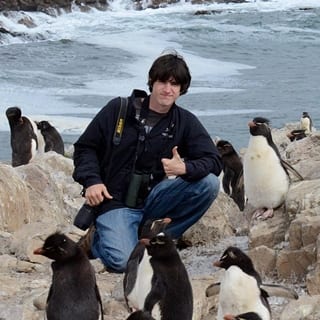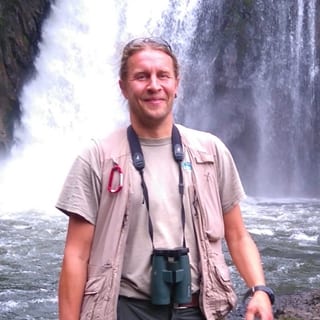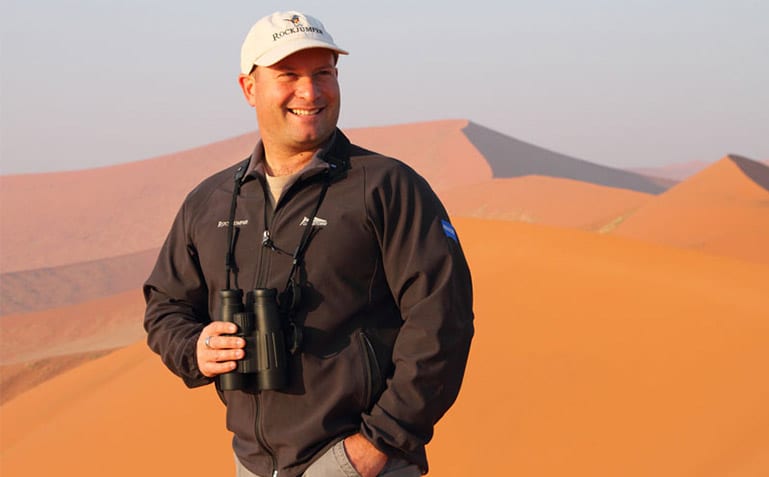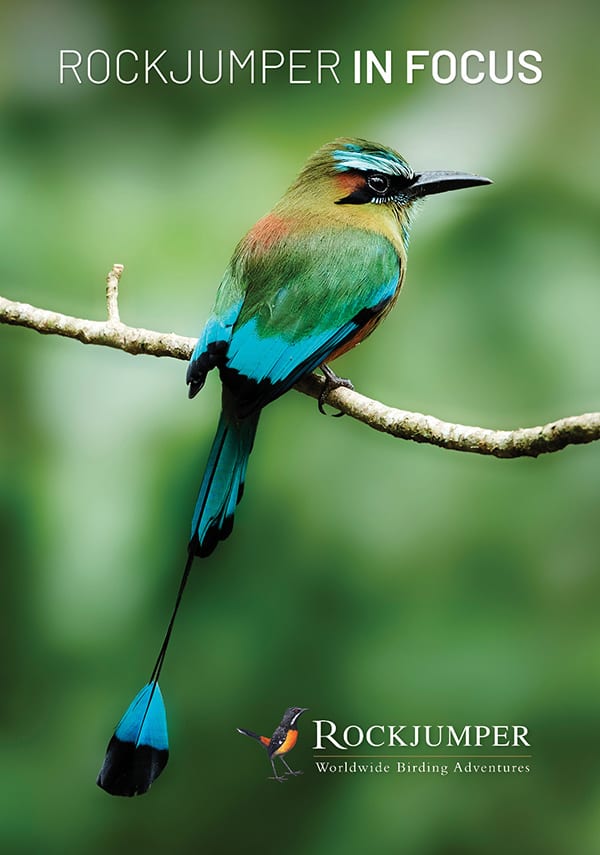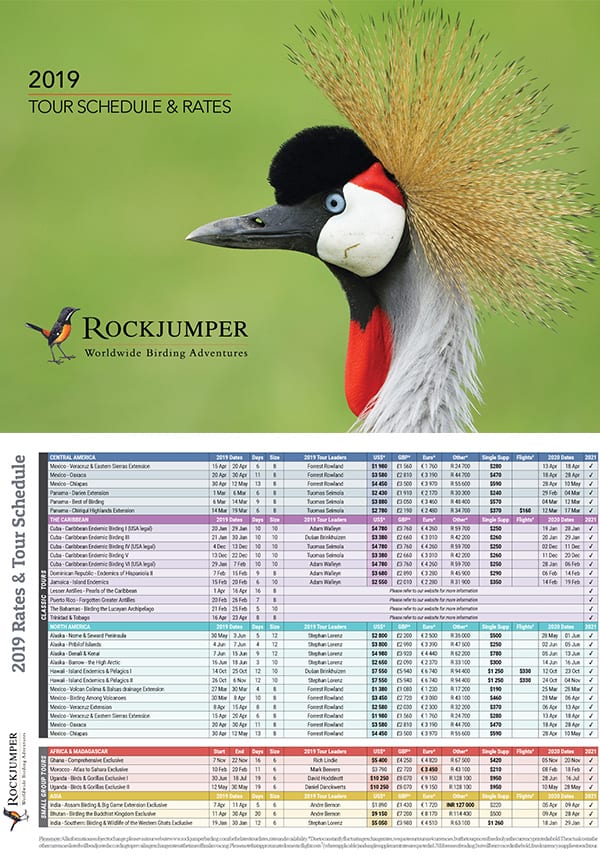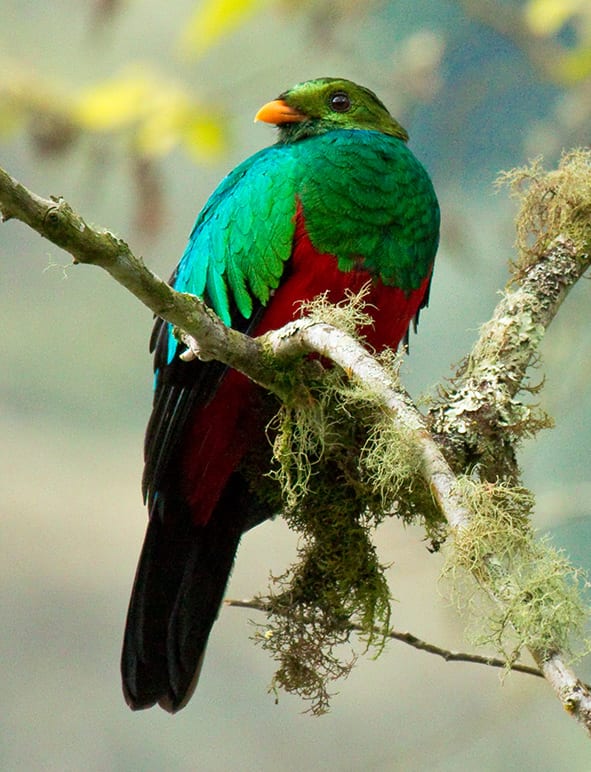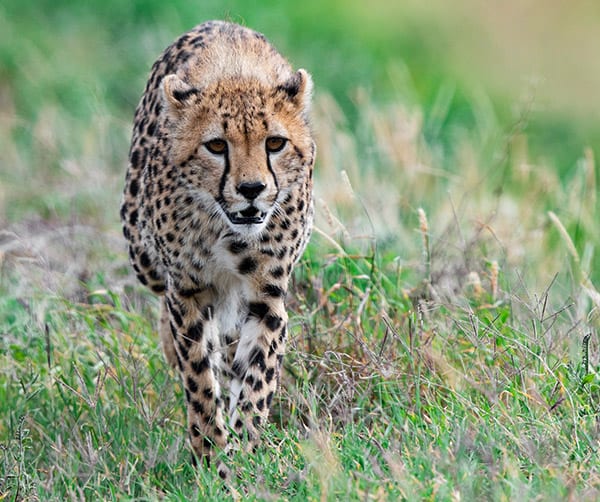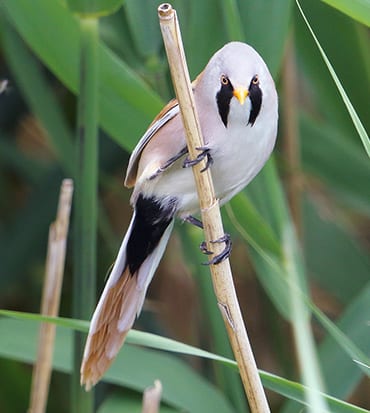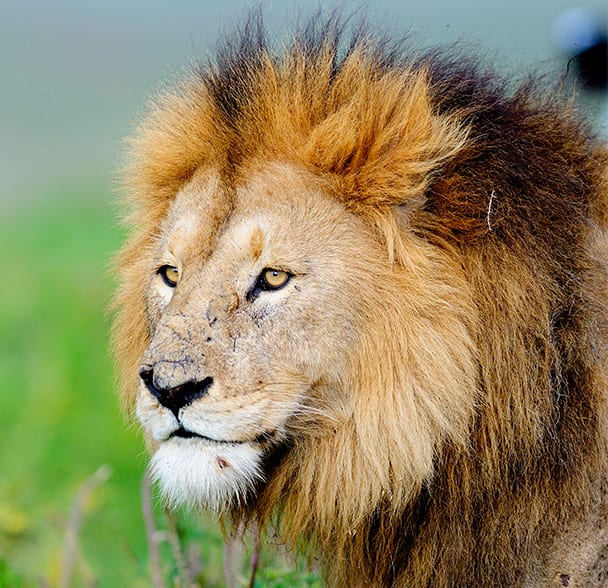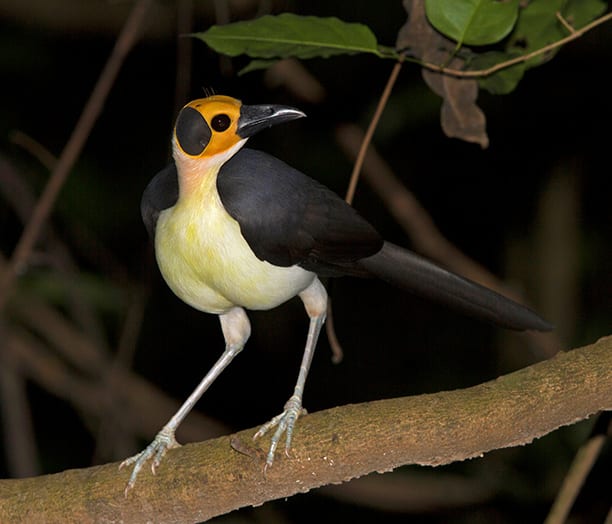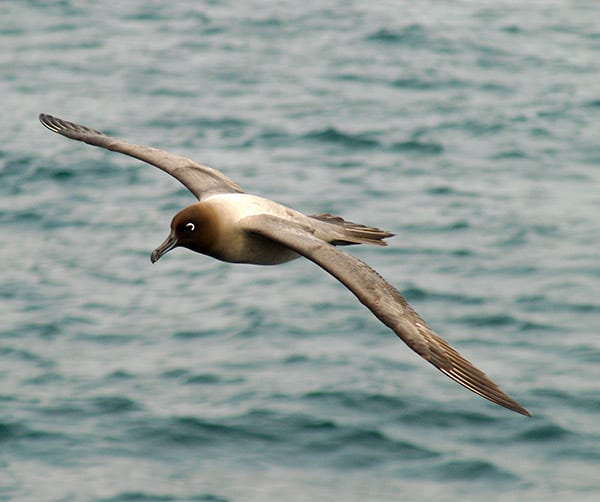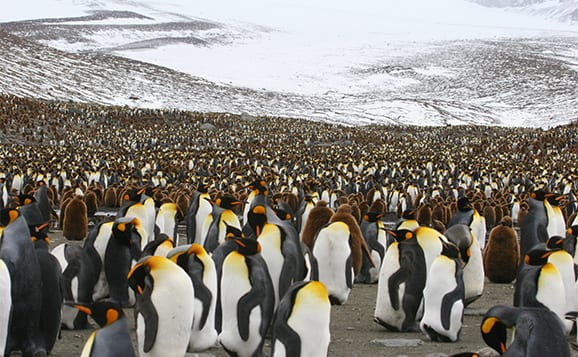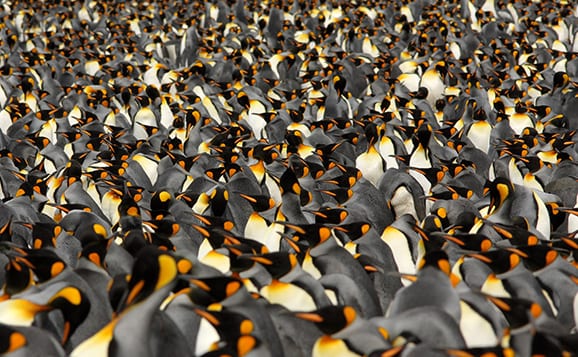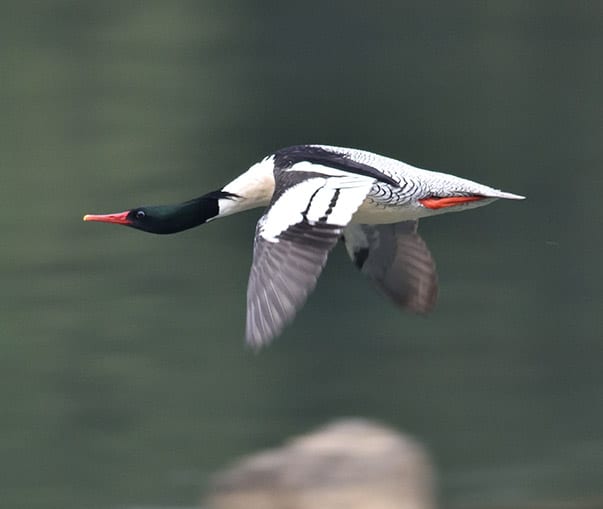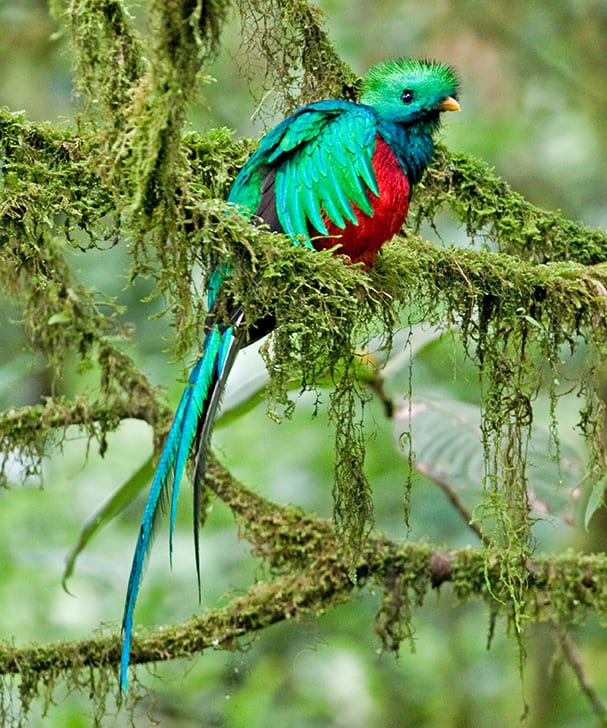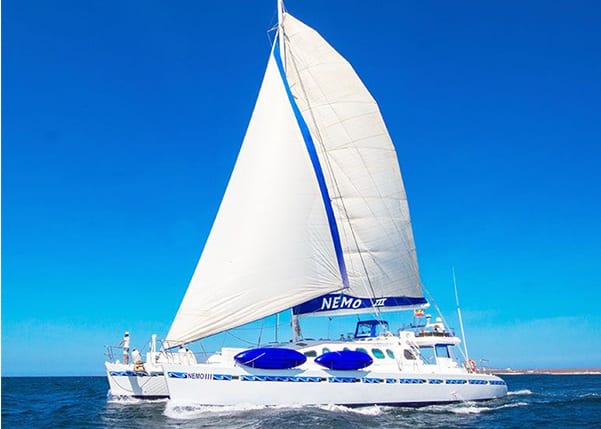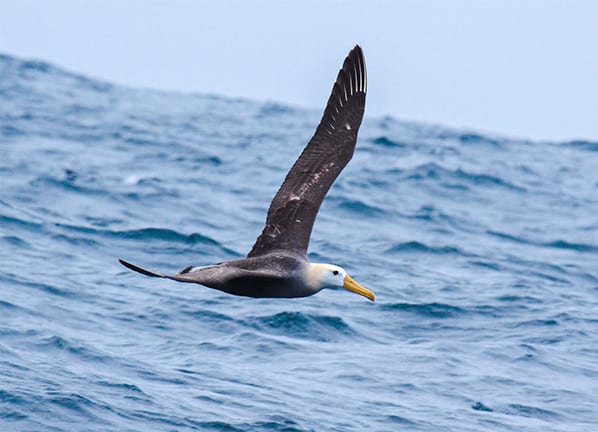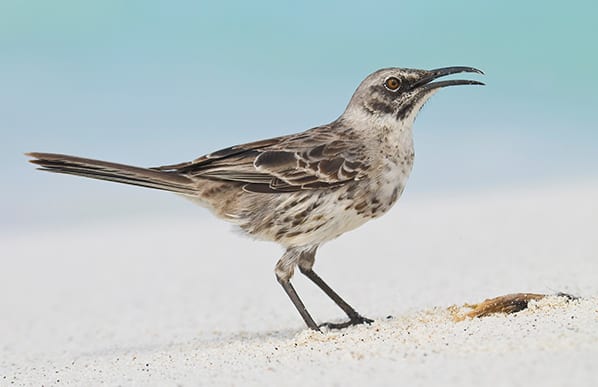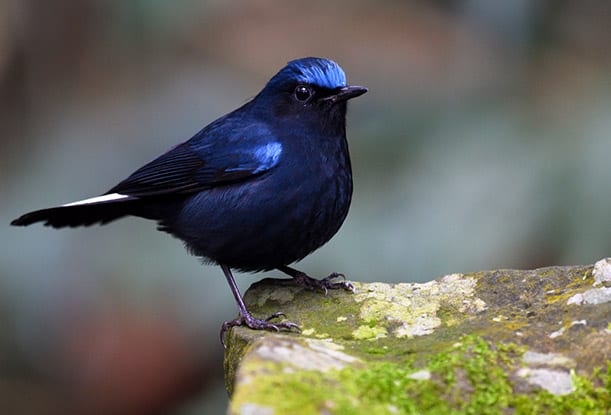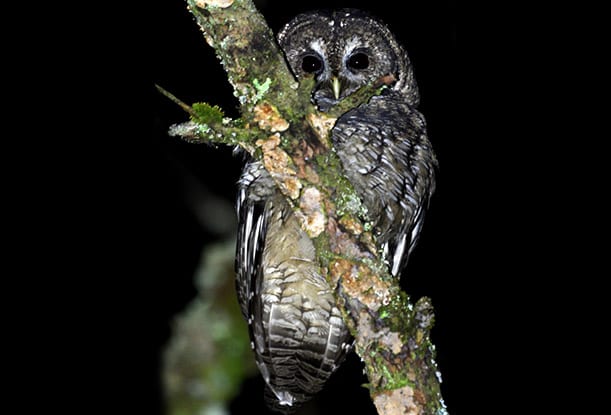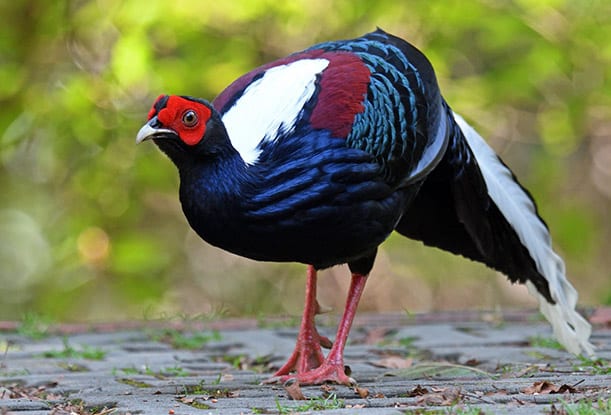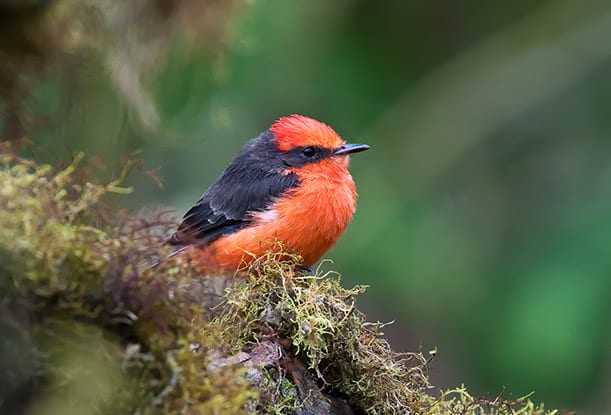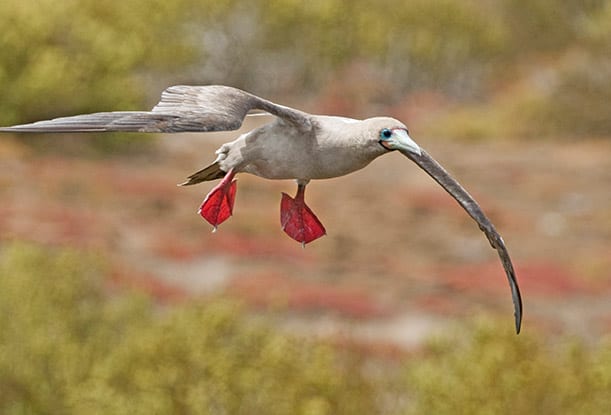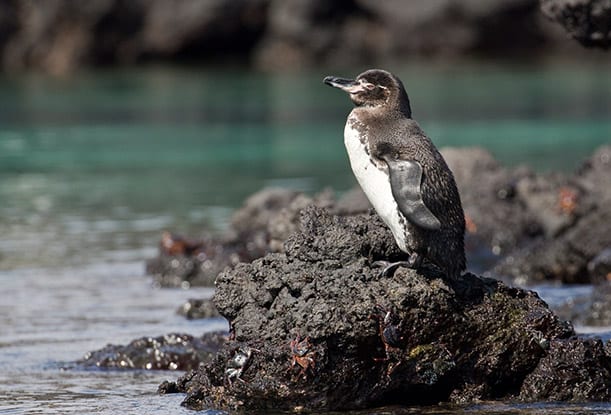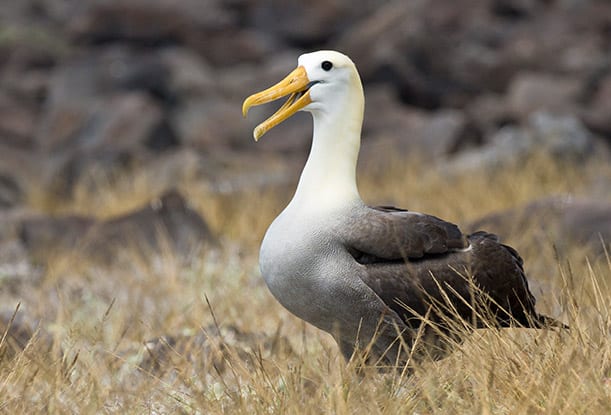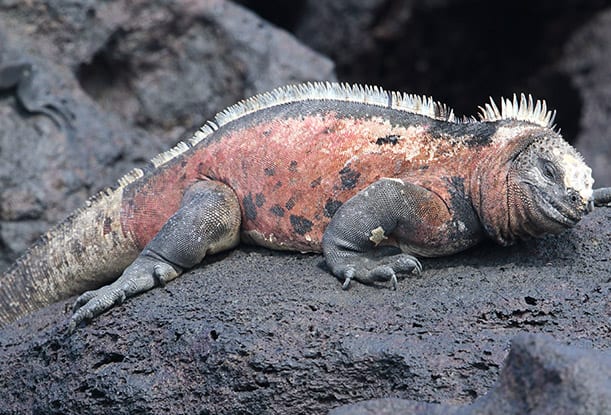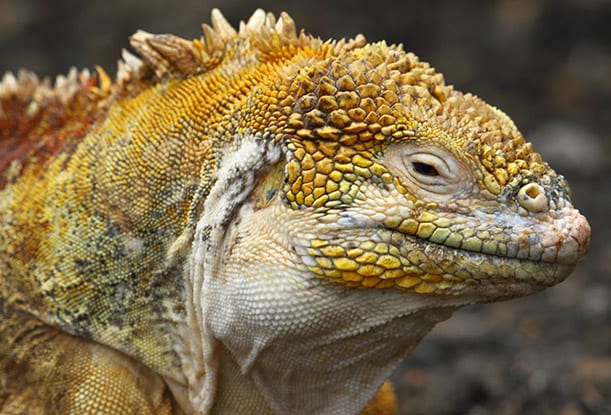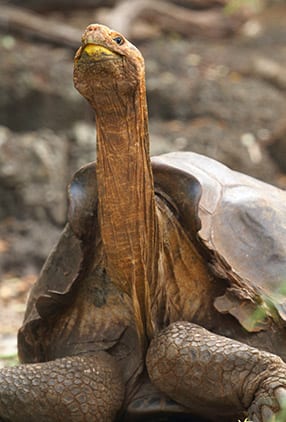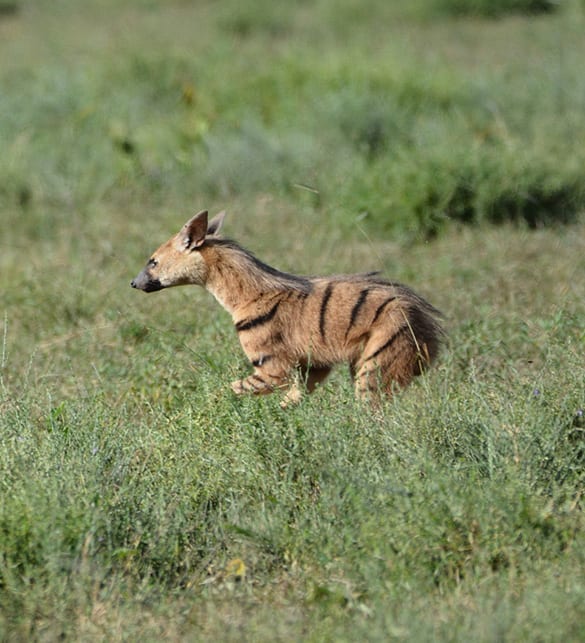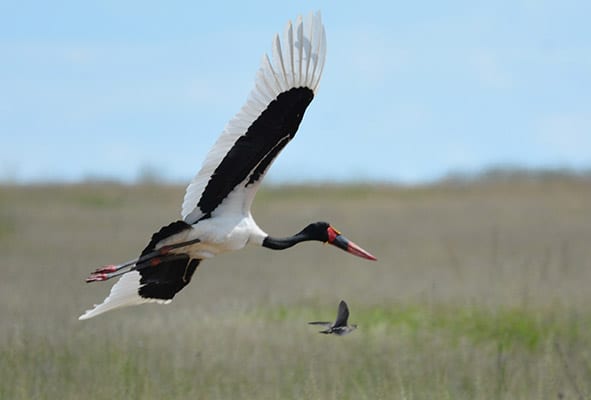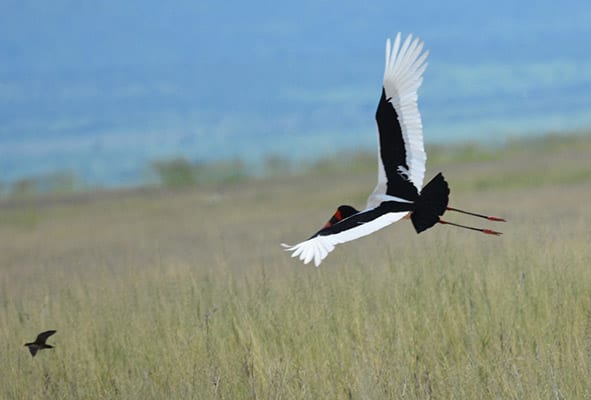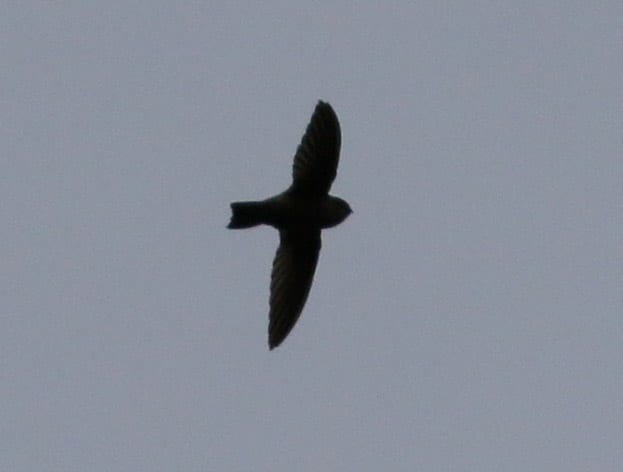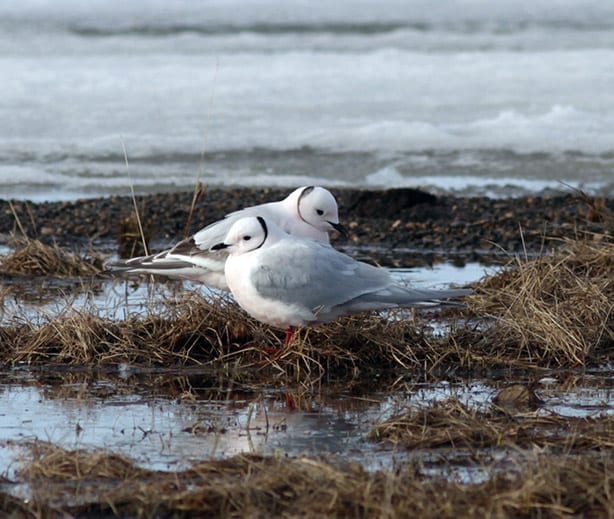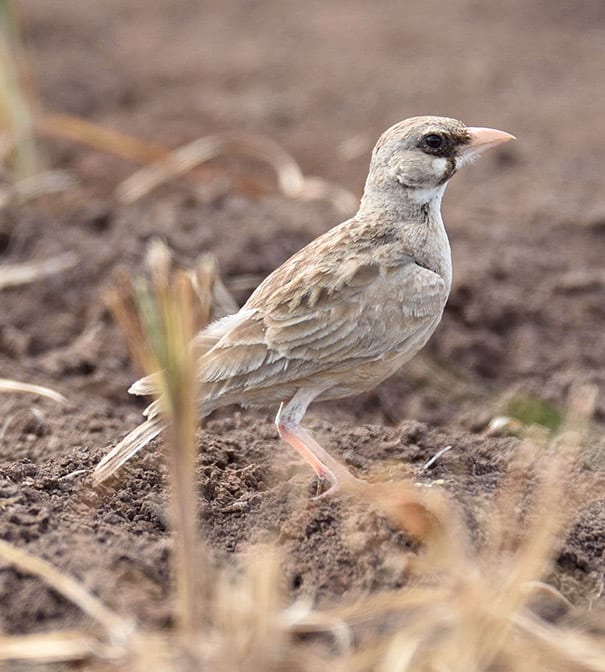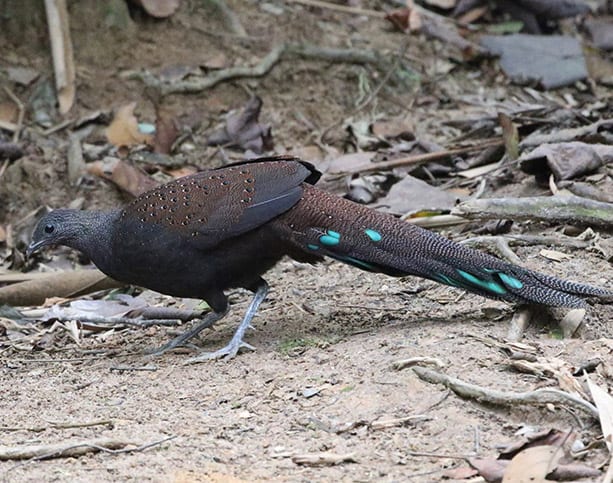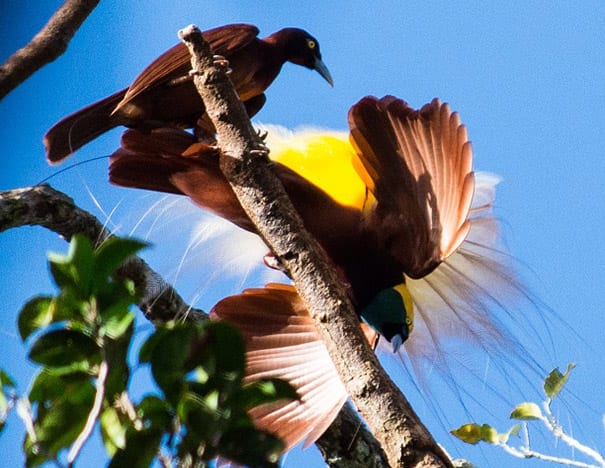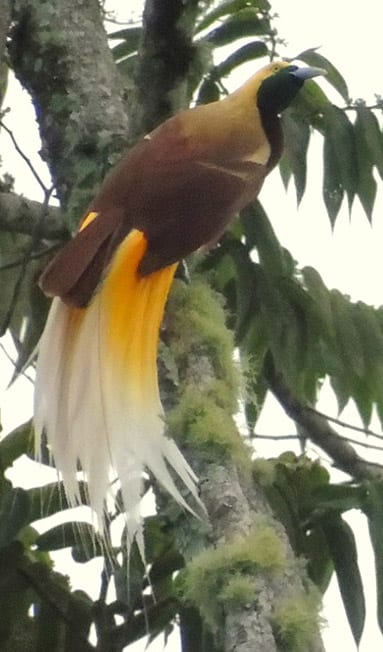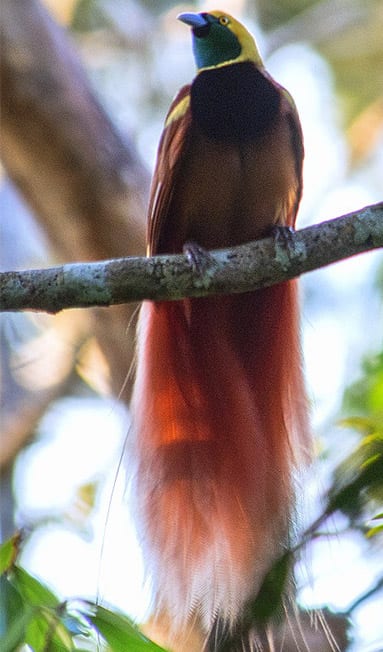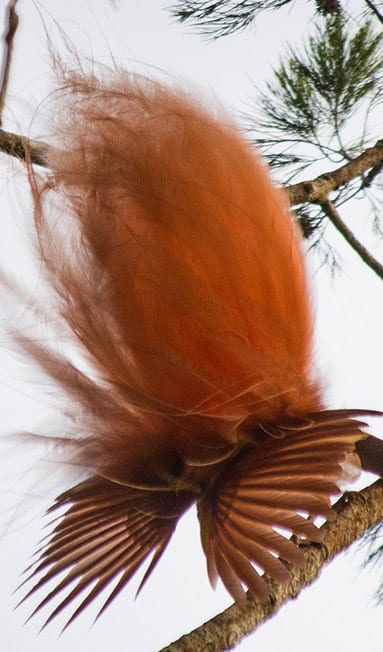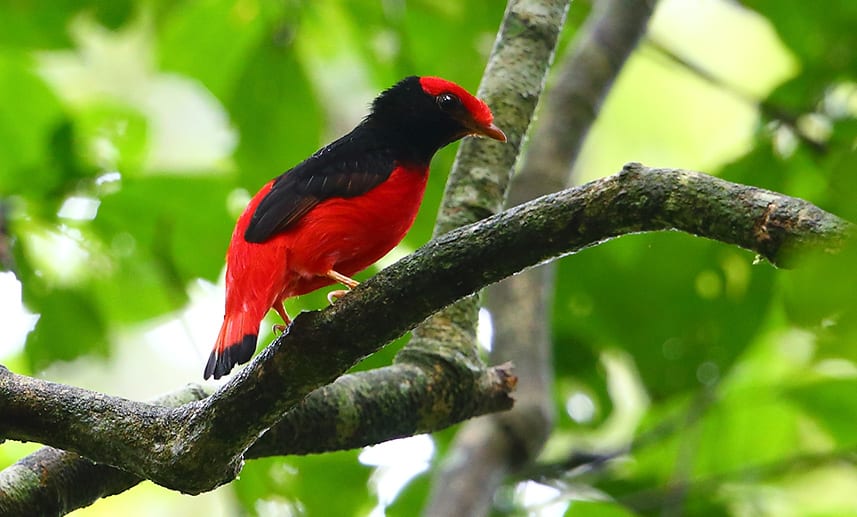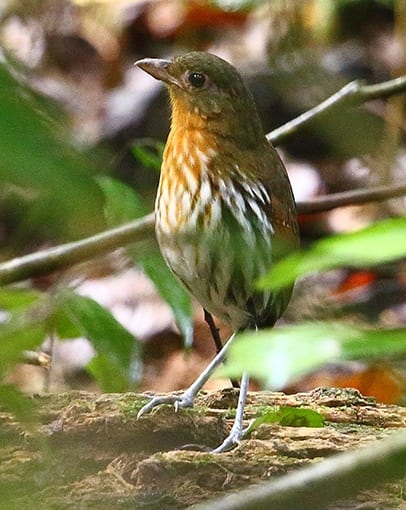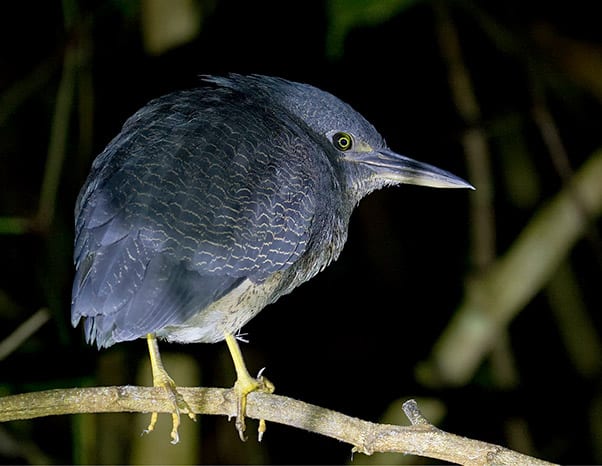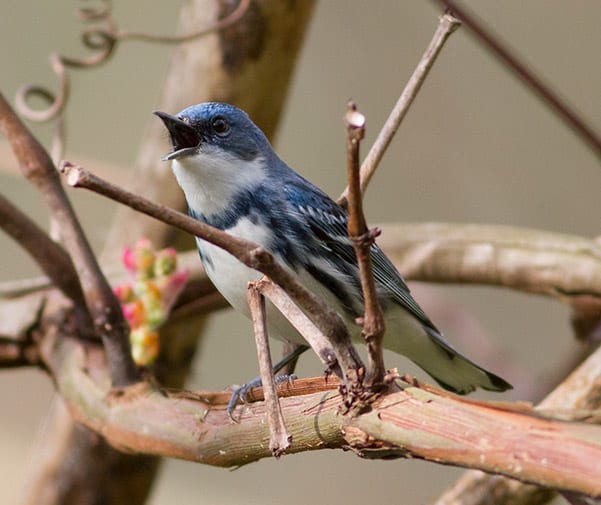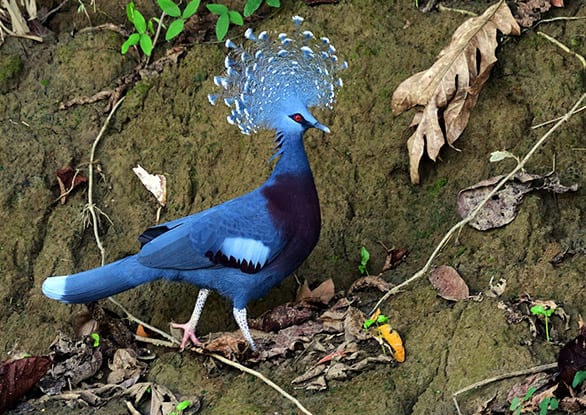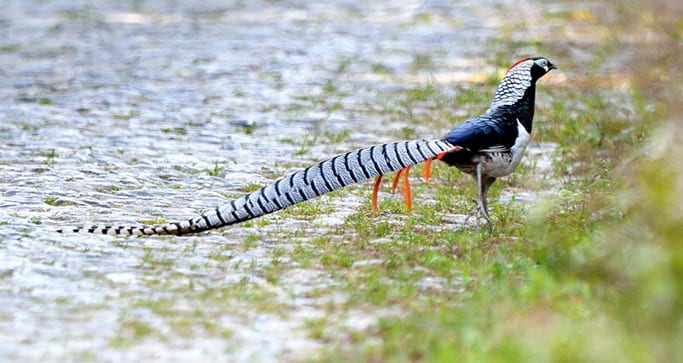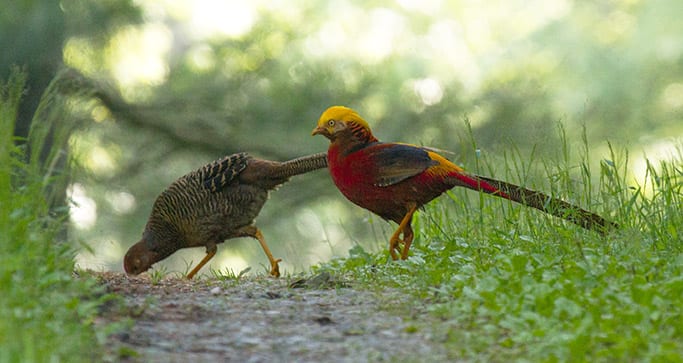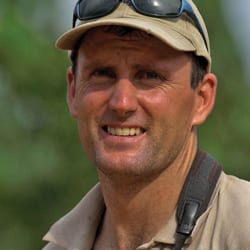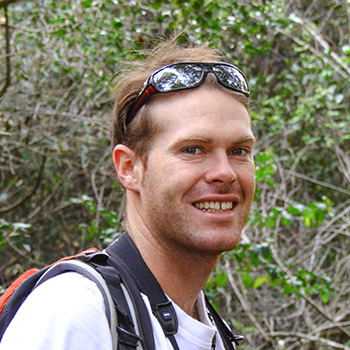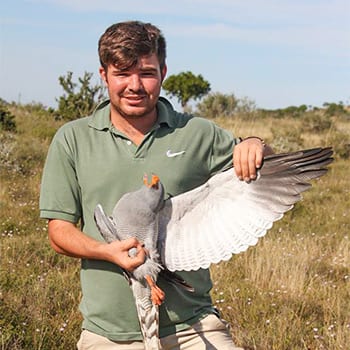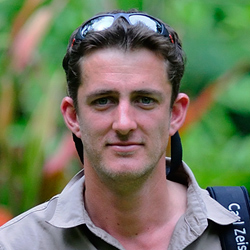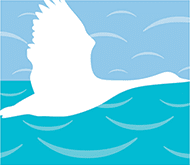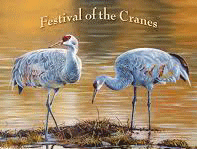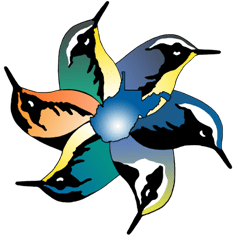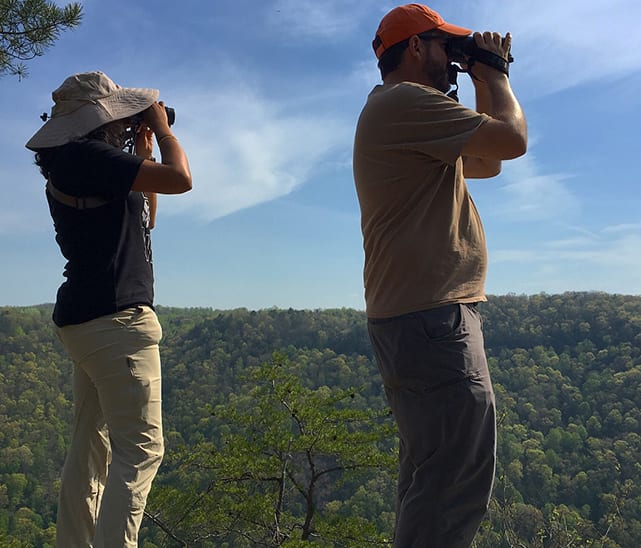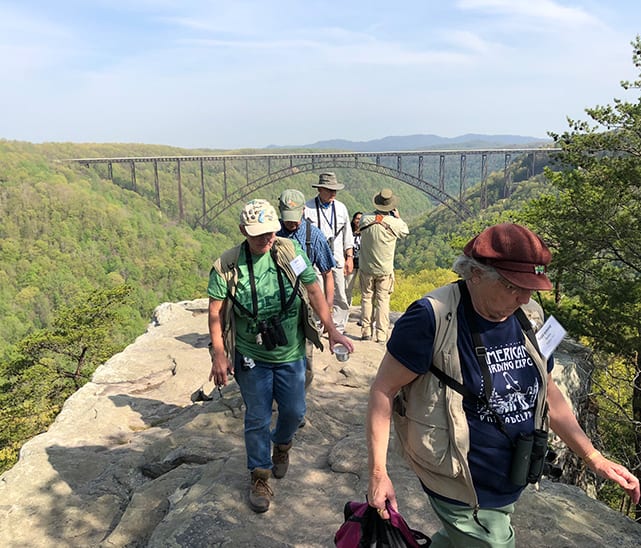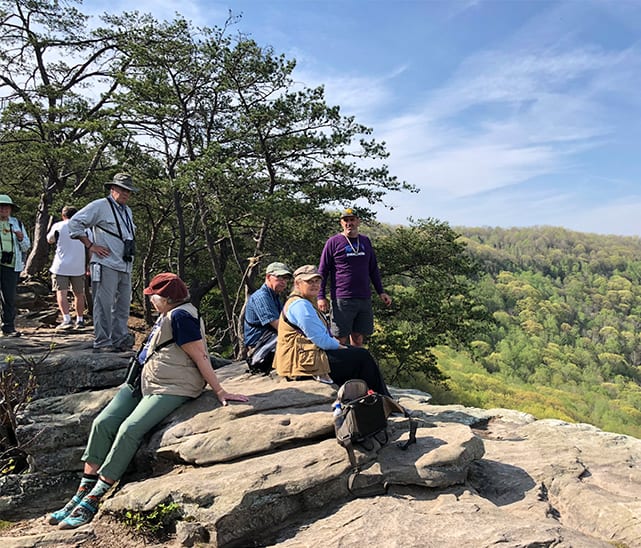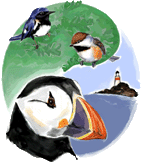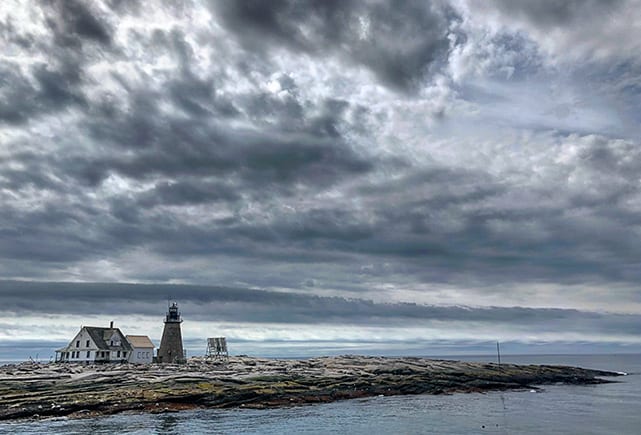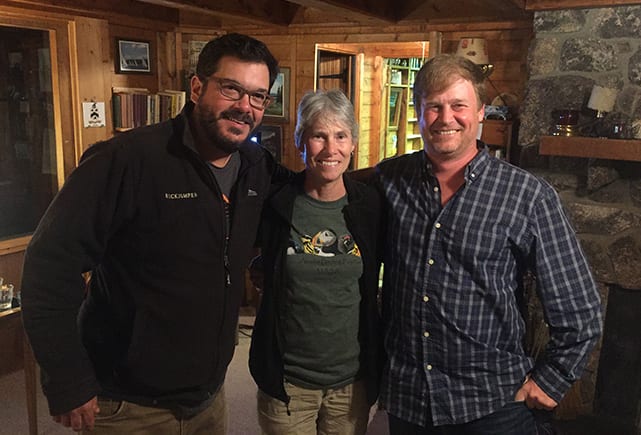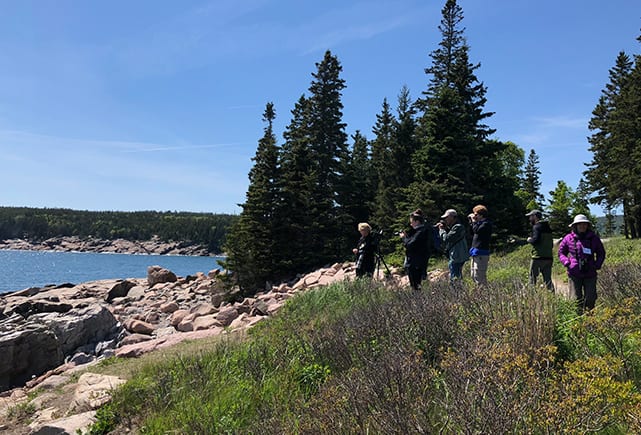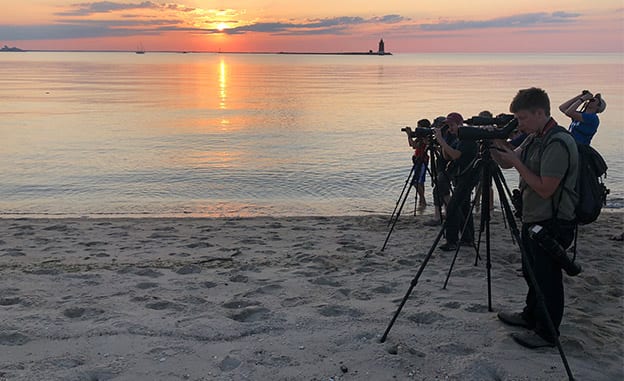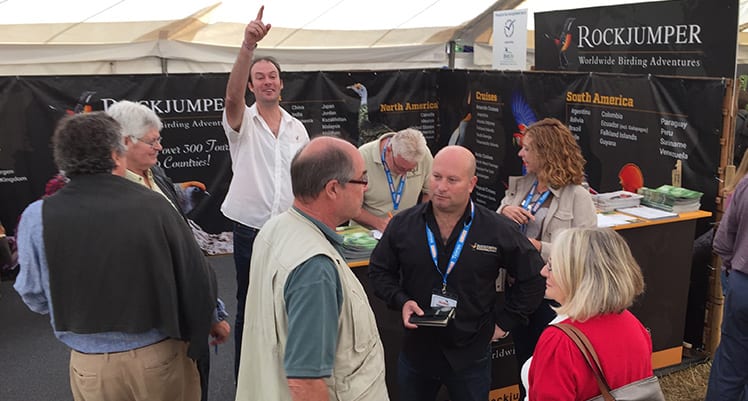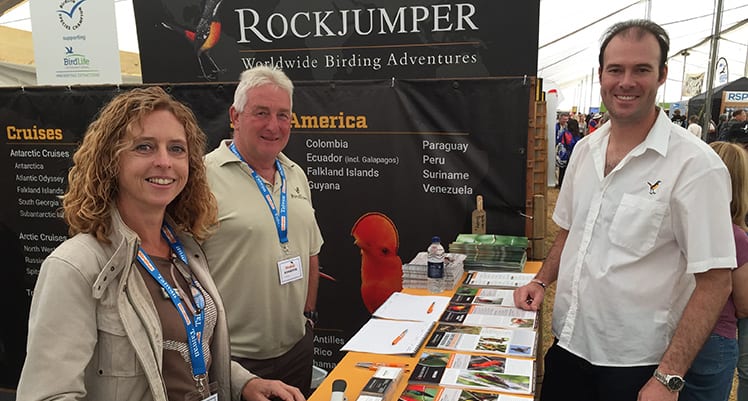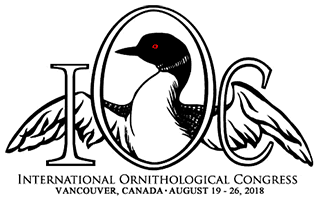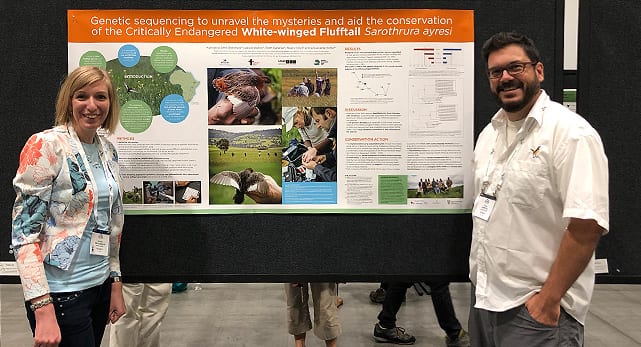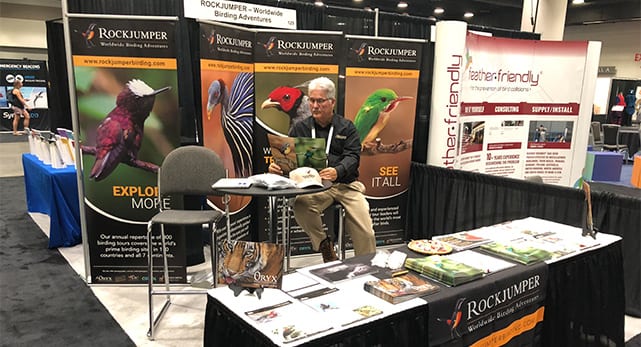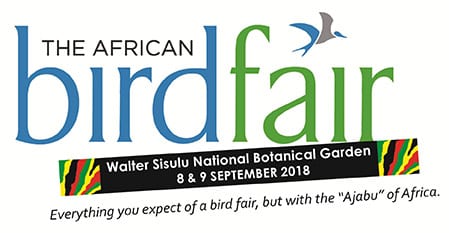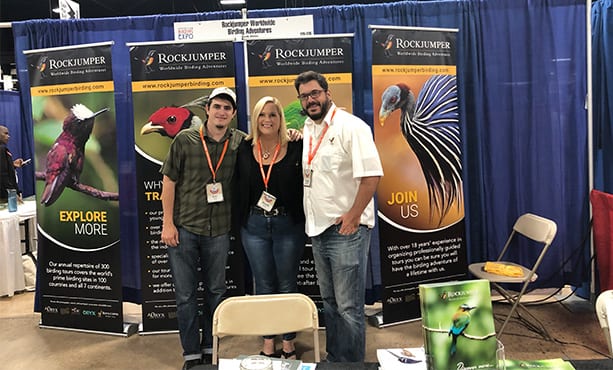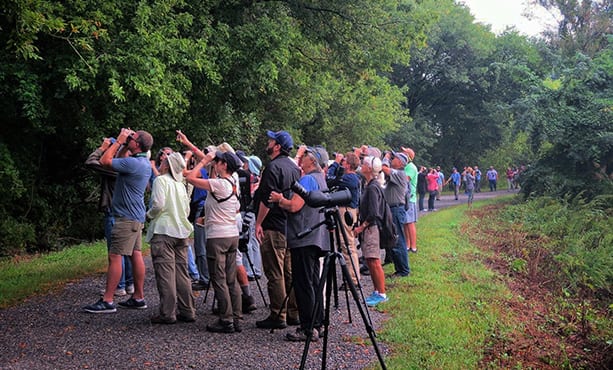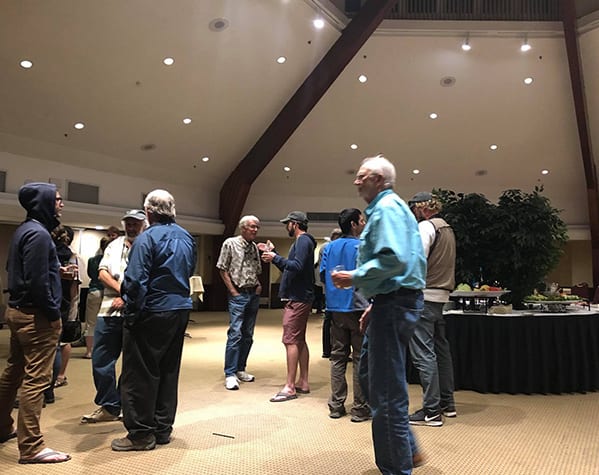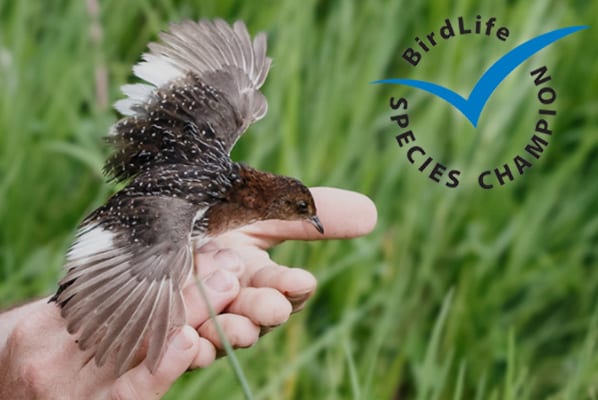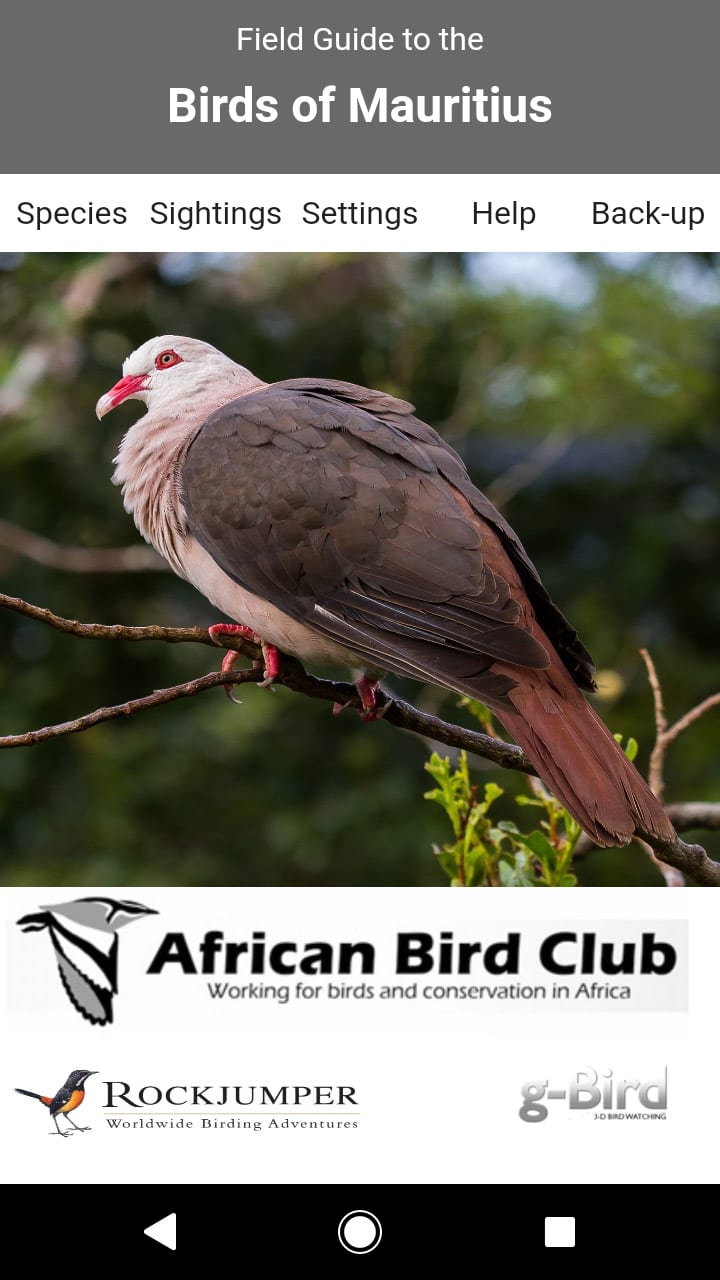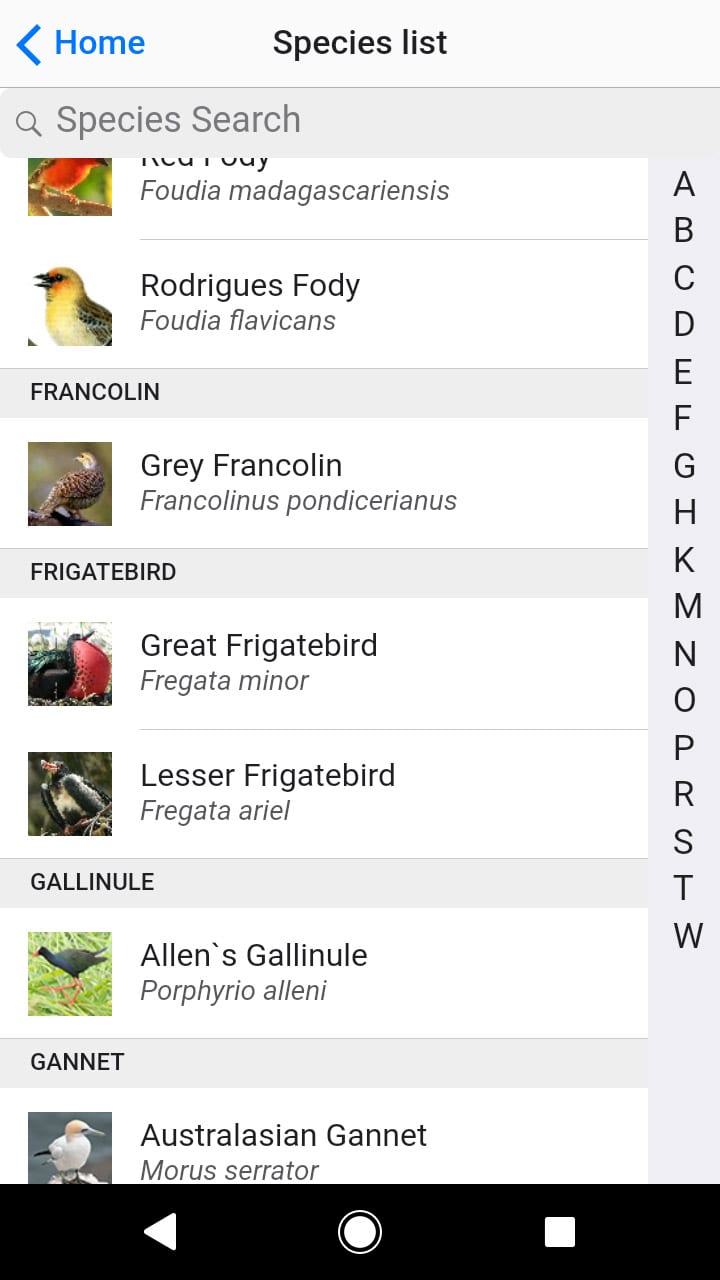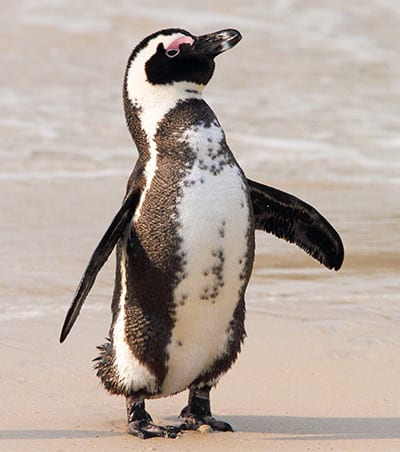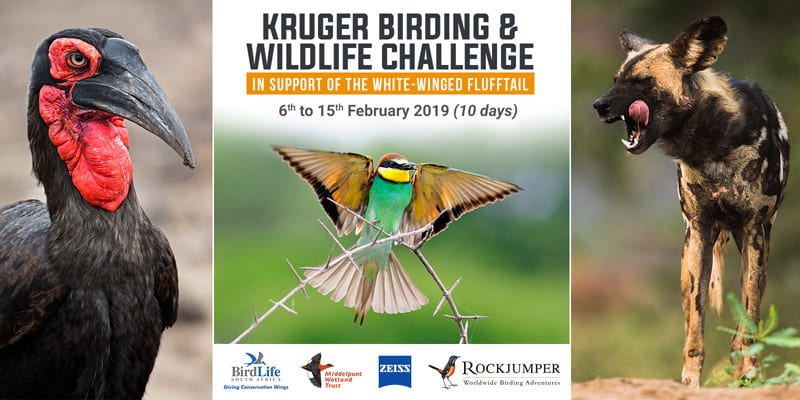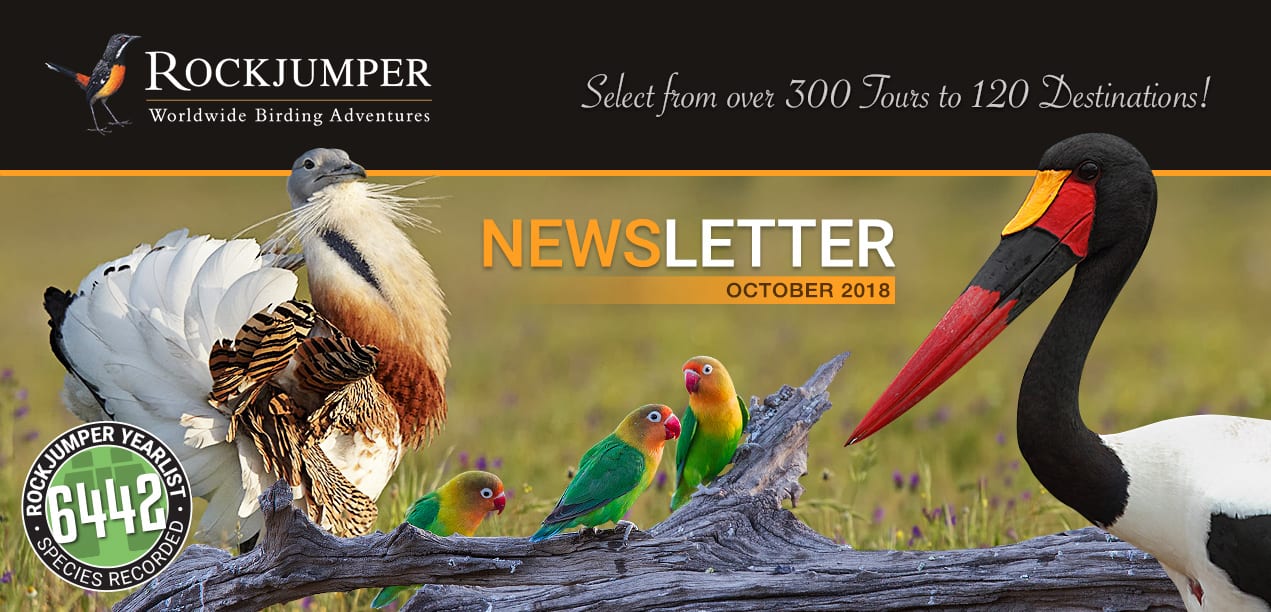
Great Bustard by Ignacio Yúfera, Fischer’s Lovebirds by Adam Riley, Saddle-billed Stork by Markus Lilje
Dear Friends,
Our Rockjumper world is thriving, and we invite you to share in the exciting changes taking place. As you dive into this newsletter, you will find new team members, engaging new birding guides, tempting client incentives, fresh and compelling tours, and… wait for it… our brand-new, revamped Tour Schedule! Rockjumper has never before offered so many fascinating tours with a myriad of options. Discovering your next birding adventure has never been easier.
Have we piqued your curiosity? We hope so! From meaningful conservation stories to glamorous bird photos, our newsletter captures our team in motion, as well as the focused mission that is Rockjumper. As Bob Dylan said, “The times, they are a-changing”, and we believe change is good.
We hope you’ll hop on board and enjoy the ride with us.
Enjoy!
Team Rockjumper
TEAM NEWS
Learn more about the newest additions to our stellar team – from Wendy Clark, who is heading up our Marketing department, to six tour leaders – read the SA Country Life interview that features the man behind our company, Adam Riley, and see how many bird species we have shown to our guests so far this year.
In July of 2018, Wendy Clark joined the Rockjumper Team as Global Marketing Director. She has earned degrees in Broadcast Communications, Education, and Commercial Music from Belmont University, advanced certification from SHRM (the Society for Human Resources Management), and has 25+ years of management, event, project, and marketing experience. Originally from Nashville, Tennessee, Wendy now lives and works from her 88-acre farm in south-east Ohio, where she enjoys daily birding and wildlife adventures with her partner Bill, and frequent visits from friends and family.

6 New Tour Leaders Join the Team
Christian Artuso – Part-time Leader
Dr. Christian Artuso is a conservationist, ornithologist, avid world birder and photographer. He has lived and traveled extensively in Asia and the Americas, and has seen over 5,000 species of birds and photographed over 3,500. He lives in Manitoba, Canada, and is the Manitoba Program Manager for Bird Studies Canada. He coordinated the Manitoba Breeding Bird Atlas, leads the Manitoba Nocturnal Owl Survey, chairs the Manitoba Important Bird Area program and sits on the bird specialist subcommittee of COSEWIC (Committee on the Status of Endangered Wildlife in Canada). He has also been involved in recovery planning for various threatened species, including the Golden-winged Warbler. Christian has trained many young ornithologists and birders, and is devoted to building citizen-science capacity by giving workshops and other forms of public outreach. He loves to share sightings and discuss bird behavior and ecology in English, Spanish, French, Italian, and Mandarin Chinese.
Lev Frid – Part-time Leader
Lev was born in St. Petersburg, Russia but now resides in Huntsville, Canada. He has a keen interest in all forms of wildlife that began with looking for insects when he was a young boy. He started working as a ranger for the Ontario Ministry of Natural Resources in one of Canada’s most famous parks – Algonquin – shortly after finishing high school, and has spent nearly a decade educating thousands of visitors about various aspects of the park’s ecology, as well as maintaining and contributing to the extensive collection of records and specimens in the archives. As this was mostly a warm-season endeavor, he spent his free months working at birdwatching lodges in Central and South America, on a boat in North Carolina spotting seabirds, and as a biologist conducting bird, plant, and ecosystem inventory all over Ontario – anywhere that would allow him to get outside with birds and people.
Richard Thomas – Part-time Leader
Richard lives in Cambridge, UK, and has been fascinated by birds ever since the age of five, when he spotted some Bohemian Waxwings in his front garden. He has had a long career in the conservation sector and loves sharing his passion for birds and birdwatching. His birding travels have taken him to all seven continents, where his focus has been on seeing at least one representative of every bird family – a feat he temporarily achieved until taxonomic rearrangements intervened. He has led tours to Fiji and New Caledonia, where the primary goal for all participants was an encounter with the unique and spectacular Kagu. Richard’s other birding aim is to see all the world’s true pittas – another goal recently made tougher by the intervention of taxonomists, but one he still hopes to achieve.
Stuart Elsom – Part-time Leader
Stu is a professional ecologist, tour leader, and wildlife photographer who is based in Cambridgeshire, from where he runs his own consultancy, Stuart Elsom Ecology. A keen naturalist from an early age, his passion for wildlife conservation has seen him serve on several regional environmental and conservation forums, and he is a former chairman of his local bird club. His lifelong interest in birds and insects has taken him to over 50 countries on six continents. Recently, he has specialized in the birds of the New World, with the avifauna of North and South America and the Caribbean being the focus of his attention. Stu is an enthusiastic wildlife photographer and a member of the Royal Photographic Society Nature Group, through which he was awarded his Licentiate Distinction (LRPS) in 2012. Over 800 of his images have appeared in various natural history journals, magazines, CD guides, and books.
Tuomas Seimola – Part-time Leader
Tuomas’ birding has grown from a passionate hobby to a passionate full-time career as an ornithologist. He spent most of his childhood summers in the countryside in southern Finland, where there were plenty of forests, bogs, and agricultural areas to explore and, most importantly, birds to observe. During the last 15 years he has guided wildlife and birding tours on four continents, but in his heart nothing beats South America. In 2015, he was part of a team – which included fellow Rockjumper leader, Dušan Brinkhuizen – that set a new “Big Day” world record in Ecuador, where they observed 431 species in a single calendar day. The part of work that he enjoys the most is being able to show remarkable sightings of rare, or just desirable birds to fellow birders around the world.
Carlos Sanchez – Part-time Leader
Born in Miami, Florida, Carlos Sanchez has had a fascination with wildlife as far back as he can remember — the first books he checked out of the library were Beehler’s “Birds of New Guinea” and Stiles and Skutch’s “Birds of Costa Rica.” While studying at the University of Miami for his International Studies degree, he began to bird in earnest throughout Florida, as well as Costa Rica and Australia. After graduating, Carlos accepted a position to do shorebird and waterfowl surveys across the northern Gulf Coast, and had the opportunity to do pelagic bird surveys for the National Oceanic and Atmospheric Administration (NOAA) in the Gulf of Mexico. However, the Neotropics were beckoning for his return. In 2010, he guided at Bellavista Lodge in Ecuador, and spent time extensively traveling the country. In 2013, Carlos returned to South America to guide at Cristalino Jungle Lodge in Brazil. Since then, he has led several tours to the Neotropics, as well as Madagascar.
“Hop on a birding tour with one of SA’s top guides”
Rockjumper Worldwide Birding Adventures’ co-founder, Adam Riley, was recently featured in an article for South African Country Life – a prominent South African travel and leisure magazine and website.
In the article, Adam discusses several topics: how he got into birding; how Rockjumper was formed; what makes South Africa, our home country, such a special birding destination; his most memorable tour; and the Rockjumper Conservation Fund.
If you are interested in learning more about the man behind the company, be sure you read this enlightening article.
Past Halfway and Still Counting
Over the past twenty years, we have worked tirelessly to develop and run tours that provide our guests with incredible birding experiences. In the process we find an impressive number of species; but, until now, we have never compiled a year list of birds recorded on our tours. This year, we decided to figure out just how many bird species our leaders show to our guests. So far, we have already seen more than half of the world’s 10,711 species, which is a huge achievement! The list currently stands at: 6,442
We are pleased to announce that Rockjumper now has the capacity to accept payments in Canadian $. So, if you’re one of our Canadian guests and would prefer to pay for tours in your own currency, please do let us know.
Our 2019 Tour Schedule is here! This time, there are a few changes…
With growth comes the tendency to be overly complex. With our annual scheduled tour offerings having now grown to over 300 tours, this tendency can become especially tempting.
This is why we’ve decided to do the opposite, and make things more simplified for you!
One way we have simplified our Tour Schedule is by categorising our birding tours into eight unique tour types: Classic, Mega, Highlights, Budget, Birds & More, Cruises, Photographic, and Small Group tours (more on this is in the download link below).
Additionally, we have released a brand-new, simplified company brochure called Rockjumper in Focus outlining these new categories as well as highlighting a few hallmark tours from each tour type. It also offers a personal look at our history, our mission and our passion for conservation. We want you to understand what Rockjumper is all about, and why we do what we do!
We hope you find as much pleasure in reading these as we did in creating them. If you find yourself itching to join one of the tours mentioned, or if you would simply like to find out more, please don’t hesitate to contact us.
“The 7 Continents Program has changed my birding life and I thank it for opening up a world of birding to me…” – MN
In 2010, we launched our limited-time 7 Continents Program. This unique offer allowed hundreds of our guests to bird the seven continents over a seven-year period AND achieve massive savings in the process. The original program is now drawing to a close, and we are thrilled to be relaunching the 7 Continents Program for everyone who missed out on the first opportunity, as well as those who want to do it all over again!
You can find out more about this unique program here!
ABA Colombia 2019
(by Peter Kaestner)
With 8,973 species recorded in eBird, Peter Kaestner is the #1 eBirder in the world, and has come to know the world’s birdiest country well. Colombia has nearly 2,000 species of birds within its borders, the most of any country in the world, and Peter returned to Colombia in 2018 as a part of a “Pajariada Diplomática” to promote birding in Colombia.
Peter writes: “Multicolored Tanager, Colorful Puffleg, Blue-billed Curassow – just some of the wonderful endemic birds of Colombia. The stuff that bird dreams are made of! In the summer of 2019, the ABA is celebrating its 50th anniversary in Colombia, with the help of Rockjumper Birding Tours and its Colombian partners. This event will be a perfect opportunity for ABA members to experience the human warmth and spectacular birdlife of our Andean neighbor – and celebrate the half-century of the ABA and its work. By birding in Colombia, you can also make a real contribution to the rural development that is essential to the continued progress of this special country and the conservation of its unique birds. I hope to see you there!”
Join the ABA and Team Rockjumper for an incredible one-time event in incomparable Colombia.
NEW TOURS
Always innovating fresh adventures, we now offer Kenya for travelers on a budget, the remote Ross Sea, Sierra Leone, and more.
Kenya – Budget Birding & Wildlife
17 – 30 May 2019 (14 days)
Our Budget Kenya tour highlights some of Africa’s most iconic and famous wildlife reserves. Our tour begins with an exploration of Mount Kenya, shrouded in montane forest – it is Africa’s second highest peak. Leaving the cool forests, we descend to the nutrient-rich Lake Nakuru, with its inexhaustible numbers of Lesser Flamingo. We then traverse the dry woodlands of Lake Baringo, home to the Jackson’s Hornbill and Somali Sparrow; while the famous Kakamega forest adds a West African rain forest element, with such highlights as Blue-headed Bee-eater and Yellow-bellied Wattle-eye being notable targets. From there, we head south towards the vast plains of what is arguably one of the most fabulous game reserves in the world, the justifiably famous Maasai Mara! This tour offers incomparable wildlife and birding at an unbeatable price, in the space of just two weeks!
Hungary & Austria – Birds, Wine & Music
20 Aug – 3 Sep 2019 (15 days)
Austria and Hungary were once the centre of the wide-ranging Austro-Hungarian empire, and the two countries are filled with historical landmarks and cultural significance befitting such a history. On this tour we will visit the centuries-old wine region of Tokaj, enjoy performances of classical and traditional gypsy music, and visit the immaculate and history-filled cities of Vienna and Budapest. Both countries also have numerous natural and semi-natural areas that hold typical Palearctic species, such as Bearded Reedling and Eurasian Penduline Tit, European Bee-eater, Northern Goshawk, Eurasian Nuthatch, and Eurasian Jay. Permanent and temporary wetlands teem with herons, ducks, raptors and shorebirds, including Western Marsh Harrier, White-tailed Eagle, Common Crane, Garganey, Red-crested Pochard, and Spotted Redshank; while the largest grasslands in Europe house the massive Great Bustard and Eurasian Dotterel. There’s no better way to explore Europe’s birdlife, culture, and cuisine!
Tanzania – Highlights of the North: Birds & Big Game
01 – 11 Nov 2019 (11 days)
Our new Tanzanian tour explores the famous and quintessential birding and wildlife reserves of northern Tanzania: Tarangire, Lake Manyara, the Serengeti, and Ngorongoro Crater. The tour will focus on Tanzanian endemics and regional specials, whilst having ample time to marvel at some of the highest concentrations of wildlife to be found anywhere on our planet, and all this amidst spectacular scenery in one of the planet’s wildest, most stable, and least spoilt destinations! Some of the many regional specials and endemic birds that will target on this tour are the beautiful Fischer’s and Yellow-collared Lovebirds, Grey-crested Helmetshrike, Grey-breasted Spurfowl, and Rufous-tailed Weaver. With Mt. Kilimanjaro as a backdrop, we will search for the highly localized Beesley’s Lark – one the world’s rarest lark species, with perhaps no more than 250 birds left. Our tour uses a superb standard of accommodation and comfortable safari vehicles with pop-up roof hatches to optimize viewing. This incredible and immensely rewarding birding safari is augmented by some of the most outstanding mammal viewing the world has to offer.
Sierra Leone – Rockfowls & Upper Guinea Specials
01 – 15 Dec 2019 (15 days)
Sierra Leone is a core West African destination, offering visitors a diverse range of exciting Upper Guinea forest birds and mammals. Rockjumper pioneered this tour during reconnaissance trips in 2005, and then led three successful tours in the course of 2006; these being the first ever birding tours to the country. Sierra Leone’s biologically rich rainforests support no less than 15 of the 16 Upper Guinea endemic bird species, including the fabled White-necked Rockfowl that will form the basis of our tour. Forest specialties abound, and we will focus on finding the rare Gola Malimbe, Hartlaub’s Duck, Brown-cheeked Hornbill, Sharpe’s Apalis, Kemp’s Longbill, White-breasted Guineafowl, and Red-cheeked Wattle-eye; while the wooded savannas are home to the stunning Emerald Starling, Crimson Seedcracker, and Turati’s Boubou, to name but a few. Our tour also offers brand new locations for two of the country’s most enigmatic specials, seen by very few birders – Sierra Leone Prinia and Black-headed Rufous Warbler.
Antarctica – Ross Sea: In the wake of Scott & Shackleton
08 Jan – 06 Feb 2019 (30 days)
The Ross Sea region of Antarctica is one of the most remote places on Earth. With shipping restricted by impenetrable pack ice to just two brief months each austral summer, few people have ever visited this strange and beautiful territory, with chances for non-scientific personnel limited to a handful of tourist expedition ships. This is a unique opportunity to experience nature on a scale so grand there are no words to describe it.
The dramatic landscape described by the early explorers is unchanged. Mt. Erebus, Mt. Discovery, and the Transantarctic Mountains are as inspiring today as they were 100 years ago. The penguin rookeries still occupy the same sites. The seals lie around on ice floes, seemingly unperturbed. The whale population is slowly making a comeback. Snow Petrels, Wilson’s Storm Petrels, Antarctic Prions, and South Polar Skuas all breed in this seemingly inhospitable environment.
Lying like stepping stones to the Antarctic continent are the little-known Subantarctic Islands. Our journey includes visits to the Snares, Auckland, Macquarie, and Campbell Islands. They break our long journey; but more importantly, help prepare us for what lies ahead. These islands are part of the amazing and dynamic Southern Ocean ecosystem of which Antarctica is at the very heart. It is the powerhouse that drives this ecosystem upon which the world depends.
Antarctica – Mega Colonies: Falkland Islands, South Georgia & Antarctica 2019
31 Dec 2019 – 17 Jan 2020 (18 days)
Antarctica and the remote islands of the South Atlantic are home to some of the largest wildlife colonies found anywhere on Earth. On the dark sand beaches and in the tussock covered dunes of South Georgia, King Penguin colonies contain more than 100,000 adult birds and their young. To the south, in the remote Weddell Sea region of Antarctica, we find Adelie Penguin rookeries of a similar size and scale. These ‘mega colonies’ are the focus of this unique voyage – a world first in polar expedition travel.
In March 2018, scientists from the esteemed Stony Brook University and their international colleagues announced the discovery of a previously unknown penguin colony, estimated to contain more than a million Adelie Penguins. Studying detailed satellite imagery of the remote Danger Islands, researchers visited and confirmed the astonishing find. These islands sit at the remote and little-visited northern tip of the Antarctic Peninsula. While the mega fauna colonies are a highlight of this voyage, history can be found at every turn, and we visit several important locations containing relics from early exploration and the whaling era. The waters are full of life, and we anticipate encounters with both whales and seals. We explore each day off the ship, in the Zodiac boats, by sea kayak, and by hiking on shore – all in the company of expert guides who interpret and educate us about our fantastic surroundings. We invite you to join us on what promises to be a once-in-a-lifetime voyage.
Last Call for 2018 Tours!
Colombia – 1000 Birds Mega Tour II
01 – 30 Nov 2018 (30 days)
USD9,750 *GBP7,350 *EUR8,274
Tour Leader: Stephan Lorenz
1 space available
India – Andaman Islands Endemics
05 – 10 Nov 2018 (6 days)
Was: USD2,650 Now: USD2,450 *GBP1,850 *EUR2,079
Tour Leader: David Hoddinott
2 spaces available
India – Southern: Birding & Wildlife of the Western Ghats II
11 – 22 Nov 2018 (12 days)
USD4,075 *GBP3,077 *EUR3,458
Tour Leader: David Hoddinott
5 spaces available
Antarctica – Peninsula Adventure II
19 – 29 Nov 2018 (11 days)
USD8,695 – USD15,995 *EUR7,379 – EUR13,573 *GBP6,564 – GBP12,075 *ZAR124,263 – ZAR228,589
Tour Leaders: Expedition Leaders
10 spaces available
Antarctica – Classic: Falklands, South Georgia & Antarctica II
29 Nov – 17 Dec 2018 (19 days)
USD14,295 – USD23,095 *EUR12,131 – EUR19,598 *GBP10,791 – GBP17,434 *ZAR204,294 – ZAR330,057
Tour Leaders: Expedition Leaders
6 spaces available
India – Highlights of Northern India
03 – 18 Dec 2018 (16 days)
USD4,950 *GBP3,737 *EUR4,201
Tour Leaders: David Hoddinott & Greg de Klerk
6 spaces available
China – Winter Birding
07 – 21 Jan 2019 (15 days)
Our China winter birding tour to the south-east of this great Asian nation offers a rich kaleidoscope of impressive and localized bird specialties, including several of the world’s most spectacular cranes. Foremost among these, poetically referred to as ‘the birds of heaven’, will be the elegant Siberian Crane, one of the rarest cranes on earth. During this tour, we will also be looking for an impressive supporting cast of exciting birds that could include the critically endangered Spoon-billed Sandpiper, which has recently been found to winter in this area, the rare Scaly-sided Merganser, thousands of Swan Geese, Falcated Duck, Baikal Teal, Oriental Stork, Saunders’s Gull, Reed Parrotbill, Pied Falconet, Elliot’s Pheasant, and possibly even the rare Swinhoe’s Crake!
Belize, Guatemala & Honduras – Ultimate
16 – 31 Jan 2019 (16 days)
Our extensive Ultimate Belize, Guatemala and Honduras tour takes us to the essential birding locations of these Central American countries. Tiny Belize, the only English-speaking Central American nation, supports the highest density of Jaguar known to man, many opportunities for Yucatan endemics, and claims the world’s second largest barrier coral reef. In Guatemala, not only is the birding superb, but mammal viewing and fascinating historical insights only add to our appreciation of the area. And Honduras is one of Central America’s best-kept birding and wildlife secrets. A biodiversity hotspot, it supports more than 700 bird species and various habitats, including over 30 separate cloud forests. The awesome birdlife throughout the tour is further augmented by the ease of travel, luxury lodges, super-friendly people and fine cuisine, making this a thoroughly enjoyable birding adventure for both hardcore and casual birders alike! Top birds we will seek include the incomparable Horned Guan, Resplendent Quetzal, Stygian Owl, regal Orange-breasted Falcon, Lovely Cotinga, Ocellated Turkey, Great Curassow, and Keel-billed and Tody Motmots.
Bulgaria & Romania – Winter
21 – 29 Jan 2019 (9 days)
This winter birding tour will take us to the northernmost part of the Bulgarian Black Sea coast (Coastal Dobrudzha) to explore two of the most important European wetlands for wintering geese. This area typically supports hundreds of thousands of wild geese in the frigid winter months, including almost the entire world population of the globally threatened and stunningly beautiful Red-breasted Goose. Up to 50,000 Red-breasted Geese have been spending the winter in the vicinity of lakes Durankulak and Shabla; which, thanks to their small area, good shelter conditions, and the surrounding, traditionally-grown winter cereal crops, have become world-famous as the best sites for watching and photographing this very attractive species. In addition, the milder climate on the southern Bulgarian Black Sea coast allows us to enjoy wintering Dalmatian and Great White Pelicans, various waterfowl species, gulls, shorebirds, numerous raptors, and much more besides!
Many of our most popular tours have already sold out for 2019. In order to avoid disappointment, we have scheduled additional departures for some of our most in-demand tours. See them below.
Kenya & Tanzania – Birds & Big Game IV
06 – 23 May 2019 (18 days)
USD8,600 *GBP6,542 *EUR7,315
Tour Leader: Gareth Robbins
Spaces available
Papua New Guinea – Birding in Paradise V
13 – 30 Aug 2019 (18 days)
PGK31,750 *USD9,554 *GBP7,267 *EUR8,125
Tour Leaders: Dušan Brinkhuizen & Stephan Lorenz
3 spaces available
Namibia, Okavango & Victoria Falls Overland V
01 – 18 Sep 2019 (18 days)
ZAR97,750 *USD6,796 *GBP5,170 *EUR5,780
Tour Leader: Marc Cronje
Spaces available
Namibia, Okavango & Victoria Falls Overland VI
19 Sep – 06 Oct 2019 (18 days)
ZAR97,750 *USD6,796 *GBP5,170 *EUR5,780
Tour Leader: Marc Cronje
Spaces available
Cuba – Caribbean Endemic Birding V
13 – 22 Dec 2019 (10 days)
USD3,375 *GBP2,568 *EUR2,871 *ZAR48,546
Tour Leader: Tuomas Seimola
Spaces available
Ecuador – Galápagos Archipelago Cruise
15 – 24 Aug 2020 (10 days)
Tour Leader: Dušan Brinkhuizen
Spaces available
More on Galápagos
With 2019 already fully booked, one shouldn’t hesitate to climb aboard for 2020 to avoid disappointment!
Based aboard a very comfortable vessel, serving excellent food, and hosted by Rockjumper’s highly-rated Dušan Brinkhuizen and experienced local naturalists and crew, we’ll explore these ruggedly beautiful islands in comfort. Forever fascinating, this is one of Earth’s most active volcanic areas, and the beautiful volcanic formations, together with the matchless wildlife and natural history, make for an utterly unique destination. Perennially popular among birders for the island endemics and stunning seabirds, nearly all the birds and other wildlife are tame, allowing for outstanding photography.
An interview with Galápagos veteran, George Armistead:
What would you most look forward to on this tour?
Obviously, the birds are incredible. The finches are fun, and present some very real identification challenges, but the seabirds steal the show. I challenge anyone not to be entertained by a Blue-footed Booby, or to watch the magnificent, graceful Swallow-tailed Gulls and not be drawn in to them. Swallow-tailed Gulls are all over, and they are stunning in their actions, shape, and plumage. Not your ordinary “seagull”! Also, the rarest gull in the world, the Lava Gull, is endemic to the islands. And there are the everyday critters…. The sea lions are endlessly entertaining, whether playing in the water or sleeping on the back of the boat, and the striking Sally Lightfoot Crabs and Marine Iguanas punctuate nearly every outing. Occasionally, there are magnificent whale sightings too.
Why travel with Rockjumper?
We have ironed out the perfect birding itinerary, and yet this trip is well-balanced for anyone that appreciates nature. We visit a couple of spots that few others see, seeing more birds in the process, but this trip is also superb for more laid-back or casual birders. The way our trip is set up is great for couples, including those who aren’t necessarily all about birds. This trip racks up the endemics while unfolding at a pace perfect for the general nature enthusiast too. We designed it such that we have a chance to see virtually all the special birds and for those who wish to experience the islands. The end result is a trip that really is the ultimate Galápagos experience.”
RECENT TOURS
Taiwan – Winter Birding by Rich Lindie
30 Jan – 10 Feb
Taiwan, understandably, has climbed its way up many a birder’s bucket-list in recent years. This is partly because of the increasing number of endemics the island formally lays claim to, but also because word is getting out! As more and more birders travel to the emerald island, more and more stories of its wonderful landscapes, delicious food, intriguing culture, and great infrastructure are flooding the birding world. And let’s not forget, it not only has dozens of endemics, many of them are superb and colorful – and easy to photograph! The downside? The high-season sees a lot of birders passing through. It also happens to be a time of year that many cannot get away. Fortunately, the birding can be just as good in the so-called off-season. In fact, you’re likely to walk away with more species under your belt in winter than you are in spring! This is because the island plays host to many wintering birds during the colder months.
This year, I led a tour to the magical island in February, just to prove this! Ok, so we ran into some unusually miserable weather, but we ended up with an impressive list of 182 species in just 12 days, including all but three of the island’s endemics (missing two as a result of unexpected road-closures only). Included in the bounty were such sought-after species as Himalayan Owl and White-shouldered Starling – both species you’re unlikely to see on a spring tour to the island. Cultural and tourist sites were uncrowded, Cherry blossoms were in full bloom, superb mountain-dwelling mammals were down at accessible elevations, and mixed-species bird parties were in full swing. So, if you fancy seeing Taiwan in a different light, or can’t make it during the traditionally popular spring months, give it a go in winter, you won’t be disappointed!
Ecuador – Galápagos Archipelago by Dušan Brinkhuizen
26 Apr – 5 May
Anyone who has visited it will tell you, the Galápagos Archipelago is otherworldly. Our special island-hopping, land-based tour aims to see all the possible endemic birds. Starting on the easternmost island, San Cristóbal, our 10-day adventure had us visiting Española, Santa Maria, Isabela, Santa Cruz, and Baltra, during which we managed 67 bird species, including every possible endemic on our route(!), and 5 species of mammals.
Bird-wise, just some of the trip’s highlights included: seeing Lava Gull, Lava Heron, Galápagos Petrel, and our first Waved Albatross on our boat ride between San Cristóbal and Española; seeing Waved Albatross at their nests, displaying, and also in flight on Española; visiting the Red-footed Booby nesting site at Punta Pitt; spotting several critically endangered Floreana Mockingbird at Champion Islet; finding Galápagos Crake, Galápagos Mockingbird, and the recently-split Darwin’s Flycatcher on Isabela; enjoying a boat ride off the western coast of Isabella, where we found and swam with our main targets for the day, Flightless Cormorant and Galápagos Penguin; and landing our last two endemics, Large Tree and Vegetarian Finches, on Santa Cruz.
In the Galápagos, the mammals and reptiles are just as fascinating as the birds, and we enjoyed many memorable encounters during our tour. We did our first bit of snorkeling at Gardner Island, where the great number of colorful fish came second to the endearing Galápagos Sea Lions that we got to play with up-close. We also got to see the sea lions on land at a harem – which was a very noisy, smelly and surreal experience! We landed incredible close-up looks of a huge Bryde’s Whale. During our boat ride off the western coast of Isabella, we lost track of what was likely a Blue Whale when a massive Whale Shark breached its fin right next to the boat – it was an incredible experience to have the world’s largest fish swimming right next to us. Some snorkeling a little later on had us swimming with Galápagos Green Turtles and some large stingrays. And, on our final day of the tour, we had a wonderful time at the Charles Darwin Research Center, where we enjoyed watching the several tortoise species that are bred there, from tiny hatchlings to individuals that are over 130 years old!
We had an incredible time on the ‘Enchanted Islands of Ecuador’. It was a tour I don’t think any of us are going to forget.
Kenya & Tanzania – Birds & Big Game II by Wayne Jones
4 – 21 May
We ran numerous tours to Kenya and Tanzania this year, each featuring its own array of amazing sightings and experiences. The second Birds & Big Game tour possibly boasted some of the most extraordinary! We started off in Tarangire National Park, where African Elephants in their hundreds roamed among the numerous giant Baobab trees. Bird-wise, we found Black Coucal, Three-banded Courser, Yellow-collared Lovebird, Freckled Nightjar, and Ashy Starling, among many others. The magnificent Ngorongoro Crater gave us Olive Bee-eater, Golden-winged Sunbird, Quailfinch, Rosy-throated Longclaw, Crested Guineafowl and our first taste of the many plains animals we would encounter in the Serengeti. On our way into Serengeti National Park, while passing through millions of wildebeest, gazelles and zebras – a remarkable sight in itself – we watched an Aardwolf running alongside the road for over a kilometer! This is an extremely shy, nocturnal species, so we were thrilled to have such a clear and lengthy daytime encounter. This was followed up by a pride of lionesses and cubs lazing on a huge, smooth boulder just down the road. But back to the birds! We managed great looks at a number of the region’s specials, including Karamoja Apalis, Tanzania Red-billed Hornbill, Steel-blue Whydah, and Grey-breasted Spurfowl.
After nine days in Tanzania, we crossed the border to Kenya. Our first stop was Amboseli National Park, with its awe-inspiring view of Mt. Kilimanjaro. Here we witnessed a sensational in-flight chase of a Lesser Moorhen by a Saddle-billed Stork – not the usual method of hunting for this large bird. After doubling back on its path, the moorhen landed in the safety of a reedbed, only to be stalked and caught by the stork a minute or two later! On the slopes of Mt. Kenya a couple of days later, the montane forest yielded Hartlaub’s Turaco, Bar-tailed and Narina Trogons, White-headed Wood Hoopoe and melanistic African Goshawk. The dry plains and Acacia woodland in the north of the country held many delights. Aside from a host of great mammals – Reticulated Giraffe, Gerenuk, Grevy’s Zebra, Desert Warthog, and Beisa Oryx – bird highlights included Golden-breasted and Magpie Starlings, Somali Courser, the localized Friedmann’s Lark, and Vulturine Guineafowl. We spent the final night of our tour at Lake Nakuru National Park, with its healthy population of White Rhino, and capped off this fantastic trip with super close looks at Endangered Sharpe’s Longclaw on our way to Nairobi on the last morning.
Adam Walleyn – Bare-legged Swiftlet
New Guinea is not short on headliner birds – what with the birds-of-paradise, bowerbirds, paradise kingfishers and so many more – but my highlight sighting from this year was a considerably drabber and more obscure bird: Bare-legged Swiftlet! This is one of a few enigmas in Papuan ornithology: a virtually unknown bird that may or may not be rare! It is certainly almost never identified in the field, and our sighting this year was the first on a Rockjumper tour. During our Papua New Guinea – Birding in Paradise II tour, we had prolonged and close observation of the bird – which fit all currently known identification criteria – in the company of Mountain Swiftlets. Tour participant, David Leversedge, managed some images which, as far as I’m aware, are the first ever captured of the species.
Stephan Lorenz – Ross’s Gull
During the final morning of the Alaska tour this year, we found ourselves back on the beautiful high Arctic tundra just outside of Barrow, following up on reports of Sabine’s Gulls in the area. A careful scan revealed at least one pair of these beautiful gulls for all to see, but another scan much further out revealed two small white and pinkish dots walking on patches of dun-colored grass. ‘Could it be?’ Yes, a pair of rare Ross’s Gulls! The Ross’s Gull can only be expected in North America during fall migration at Barrow, and I had never visited Alaska during that time of year. It was a lifer for everyone, and after trekking across the frozen tundra for them, we all ended up with lengthy and close scope views of them foraging and courting. What a finish to the tour, and my clear highlight of the year so far.
Clayton Burne – Masked Lark
Recently, we (Meg, Kaily and I) found ourselves in the middle of a series of remote plains in southern Ethiopia. With all Ethiopian endemics tied up at this point, we had a day dedicated to finding the rarely seen – but very sexy – Masked Lark. It is probably not an uncommon bird, with populations found in northern Kenya and both southern and eastern Ethiopia, but most of the locations where it has been found have suffered from long-term security issues, meaning few birders or ornithologists have spent much time observing the species. Thankfully, southern Ethiopia is perfectly safe – even if the prime birding areas are a bit of a drive to reach. Heart rates spiked every time a likely colored bird flushed from the side of the car, but invariably they ended up being female Chestnut-backed Sparrow-Larks. After 10 minutes without luck, I could feel doubt starting to creep in: ‘Did the habitat look right?’, ‘Were we going about this the right way?’. As I began to fear the possibility of ‘dipping’, a larger pale bird flushed and landed nearby. The big pink bill was immediately more obvious before the bird turned to look at us squarely, flashing a gorgeous black mask and white chin. Ultimately, we found at least a dozen individuals before calling it a day!
Nigel Redman – Mountain Peacock-Pheasant
When I first visited Asia almost four decades ago, some birds were almost impossible to see, either because they were very rare, extremely shy, or just poorly-known. In many cases this situation has changed for the better, and many of Asia’s most sought-after birds are now easier to find. But there are still some that are not. Mountain Peacock-Pheasant, endemic to Peninsular Malaysia, used to be one of the famously tough species to see – if you were very lucky, you might catch a glimpse of a tail disappearing into the forest (as I once did!). So imagine my surprise and delight, when visiting Bukit Tinggi on the first day of our Malaysia & Borneo – Rainforest Birds & Mammals II tour, to see this wonderful male Mountain Peacock-Pheasant. It came out into the small open clearing close to its dancing ground five times! Definitely the highlight of my year so far.
Gareth Robbins – Greater, Lesser & Raggiana Birds-of-paradise
After guiding several tours in Papua New Guinea recently, I have developed a fondness for a few of the bird-of-paradise species that we often get to see. In particular, Greater, Lesser, and Raggiana Birds-of-paradise always put on a great show and are also a lot easier to photograph, making them a favorite. Great views don’t come easily though, as good timing is key when visiting the prospective lek sites. The morning is the best time for Lesser and Raggiana Birds-of-paradise, but the sun needs to be in just right spot for these birds to come out and display. Greater Birds-of-paradise, however, seem to show much better in the late afternoon. After seeing and hearing these birds display, you cannot help but favor them over many of the otherwise awesome birds available in Papua New Guinea.
Adam Riley – Black-necked Red Cotinga AND Ochre-striped Antpitta at the same time!
During a private tour to Ecuador in July, Dušan Brinkhuizen and I took the group along a terra firme trail near Napo Wildlife Center in the Amazon. The goal was to find a lek of the highly sought-after and stunning Black-necked Red Cotinga, one of the Amazon’s most desirable species. Eventually, from a distance we could hear half a dozen lekking males, and that first sighting of this brilliant crimson and black bird at eye-level will be one of my most enduring birding memories. Of course, my camera wouldn’t focus… but it’s seared in my mind forever! We watched these incredible birds for half an hour, when suddenly Dušan’s finely-tuned ears picked up an Ochre-striped Antpitta, one of the most elusive members of a rather elusive family, and of which almost no photographs exist. After some effort, we spotted this secretive bird inflating its chest and hooting away from a perch on a fallen log on an opposite slope, with the Black-necked Red Cotingas still shrieking in the background. What an amazing hour of birding!
Dušan Brinkhuizen – Zigzag Heron
Tiny and secretive, rare and local, and also sporting a cool name, the Zigzag Heron is an absolute stunner! During a recent private trip to the heart of the Amazon basin in Ecuador, the group got close encounters with this enigmatic species. Seeing it during the daytime is tricky because of its retiring nature; so (in Ecuador) the best chances are at dawn and dusk. Just before dawn, we took a canoe into the flooded Varzea forests of Yasuni National Park and located TWO adults perched on a single branch! One bird moved off pretty quickly, but fortunately for us the other one was less perturbed and continued to pose for a long time. Just one of the many prizes we got to see in mega-diverse Ecuador!
George Armistead – Cerulean Warbler
May is my most eagerly anticipated month in the mid-Atlantic U.S. The long winter recedes in April, but often it isn’t until May that the monochrome scenescape gives way to fresh sound and color. Nothing better exemplifies spring’s arrival than the wood warblers. While all are special, rich with color and spirited in song and behavior, there is one which I have seldom seen well, and never photographed. The Cerulean Warbler typically lurks in the treetops, often offering only views of its belly if anything. While representing Rockjumper at the New River Birding Festival in West Virginia, I knew I’d have a chance to see this azure piece of eye-candy, but it wasn’t until the final morning that I re-connected with this old friend. Ascending a ridgetop, I immediately heard several Ceruleans issuing out their resonant, buzzy song, including this one that magically graced me at eye-level.
Rich Lindie – Victoria Crowned Pigeon
Despite being the largest pigeon on Earth, the spectacular Victoria Crowned Pigeon is not easy to see at all, let alone photograph! In fact, its large size is the very reason it has become so hard to find in so many places, as they are among the primary species to be targeted by hunters living within their range. I was, therefore, incredibly surprised to find a pair sauntering along the edge of the relatively heavily-populated Karawari River in Papua New Guinea, and practically shocked when they stayed there long enough for me to fire off dozens of photos to boot! To add to it all, these were my lifer views!
Daniel Danckwerts – Lady Amherst’s and Golden Pheasants
There are a few bird species that are so impossibly colored that they hardly seem real! Arguably some of the finest examples of these are the Lady Amherst’s and Golden Pheasants – two birds that have become familiar from bird parks and gardens around the world, but which are rare and difficult to see in their natural range. By some stroke of luck, my very first tour with Rockjumper was to China’s Sichuan province; rightly considered the pheasant capital of the world. Here, we would drive forested roads before dawn and after dusk, when the pheasants would emerge from thickets to feed. We were successful in finding several Lady Amherst’s Pheasants throughout the first half of the tour, but Golden Pheasant had to wait until one of our very last mornings. Our experience with the latter was truly memorable, with a male and female crossing the road just meters in front of our group. Both species were totally breathtaking!
TESTIMONIALS
Our guides, your words. Hear what folks are saying from recent experiences with Rockjumper guides.
Stephan Lorenz is an exceptional guide, being both a wizard at finding and identifying birds and also dealing with people. He has a kind and funny manner that puts everyone at ease. I am glad that Rockjumper has hired him and look forward to being on some of his trips in the future – EL, Alaska 2018
David Hoddinott is an outstanding leader. Always conscious of the need to ensure that everyone sees each bird, he does, rightly, expect concentration and a positive approach throughout. This is the second time that I have traveled with David and I hope that I have the opportunity again in the future – PS, China 2018
David Hoddinott was an excellent bird guide, finding and identifying birds at amazing speed and ease. He had researched the field well, and knew where to find the birds. He also had researched the literature and was versed in all the newest taxonomic changes. He was very patient in assuring that all the participants got on the bird – JG, China 2018
The guides were knowledgeable, energetic, and very personable. I would go with Erik Forsyth anytime, anywhere. He made sure we were comfortable, well fed, and saw the birds, not an easy feat with the constant rainy conditions. I also appreciated his sense of humor. Yes, I would go with Rockjumper again, and I am planning on a 2019 trip already. They have become my favorite bird tour company for many reasons – JT, the Philippines 2018
Glen Valentine is an incredible guide and has real talent. We very much appreciate him and always find his tours fun and so rewarding with great birds, and great views even in freezing conditions. Any tour with Glen is a guaranteed success and a good time. Daniel Danckwerts will be a great asset to RBT and contributed to the success of the tour. He is also personable and has a great sense of humor. He wasn’t all that slow with his scope either and we all saw some fine birds through his scope. We are never surprised at the excellence of RBT guides – MN, China 2018
As usual, Glen Valentine was fantastic. I have traveled with him before and it never ceases to amaze me how he can hear and spot birds so effectively. And his enthusiasm is contagious. You know that he has seen any given bird on previous trips but it’s as though he is seeing it for the first time with you! Daniel Danckwerts was also on the tour “learning the ropes”. Very knowledgeable and a good asset to have on the tour. A superb spotter! All in all, this was a fantastic trip. I would recommend it to anyone – PK, China 2018
The ability of our guide, Rich Lindie, to locate the birds from the faintest movement or call under difficult and trying conditions was outstanding – BM, Malaysia & Borneo 2018
I consider myself very lucky to have had Nigel Redman as our tour guide. His knowledge of the birds, as well as their habitats, and ability to spot them made for a completely satisfying birding experience. He also ensured we were all made comfortable in regards to traveling, meals, and lodging. Thank you for a great birding tour – SM, Finland & Norway 2018
EVENTS
Autumn in the US is a busy season. Find out where you can see us in the coming months as well as report on the events we have attended around the world.
Wings Over Water Wildlife Festival
16 – 21 October 2018 • North Carolina, USA
In 1997, Wings Over Water Wildlife Festival was created to offer the public wildlife interpretation and educational opportunities and experiences on regional national wildlife refuges. This annual national wildlife refuge fundraising event has grown from a few offered activities to over 90 birding, paddling, photography, art, and natural history programs. The festival takes place in 6 national wildlife refuges over 6 north-east North Carolina counties. It is one of the premier east coast wildlife festivals. Locally, many activities take place on National Park Service property, specifically Cape Hatteras National Seashore, one of the Festival partners. In 2018, Rockjumper’s very own George Armistead will serve as keynote speaker, giving a talk titled: My Ornithologist: The Unique Life of the Birder.
Rio Grande Valley Birding Festival
7 – 11 November 2018 • Harlingen, Texas
The Rio Grande Valley Birding Festival celebrates its 24th anniversary this year in Harlingen, Texas, home to the most bird species in the continental US! For a quarter-century, thousands of birders have gathered each year to hear outstanding keynote speakers, visit with dozens of exhibitors, and participate in birding field trips to see the famed “RGV Specialties” – birds that can only be seen in the US along the US-Mexican border. Rockjumper will participate in the Rio Grande Valley Birding Festival as a sponsor and exhibitor again this year, proudly supporting one of the biggest, longest-running birding festivals in the United States.
Festival of the Cranes
14 – 17 November 2018 • San Antonio, New Mexico
The Bosque del Apache National Wildlife Refuge, located south of San Antonio, New Mexico, is known among birders and wildlife photographers as the Sandhill Crane capital of the United States. The Festival of the Cranes, Bosque’s birding festival celebrating the wildlife of southern New Mexico, will take place for the 34th year this November, when cranes and geese will once again adorn the sky by the thousands. Alongside hundreds of avid birders, photographers from the US, Mexico, and beyond will attend this event to view the spectacle of the cranes and photograph New Mexico’s breathtaking landscapes. Rockjumper is proud to attend this event as an exhibitor for the first time this year, and we look forward to connecting with birders and photographers from across North America.
Busy as a Bee Hummingbird, Team Rockjumper has attended and supported a variety of events in recent months.
New River Birding & Nature Festival
30 April – 5 May 2018
The New River Birding & Nature Festival, centered in and around the green Rhododendron-choked valleys and green ridges of the New River Gorge National River in West Virginia, is not only home to a dizzying array of snazzy wood warblers, but also a great gang of birders. With an all-star squad, including festival organizers Geoff Heeter and Rachel Davis, other well-known birders like Bill Thompson III, Julie Zickefoose, and many others call New River one of their favorite spots in the U.S. Here, the heart of the upland hardwood forests provide crucial stopover and nesting habitat for the continued survival of species such as Golden-winged, Blue-winged and Swainson’s Warblers, as well as the Scarlet Tanager. Rockjumper sponsored several field trips and George Armistead gave a talk titled “Audio-lures: The Good, the Bad, and the Ugly of Using Playback”. The 2018 New River experience was again fantastic, and we look forward to returning in the years ahead to enjoy the world-class birding and the incomparable company of West Virginia’s birding scene.
Acadia Birding Festival
31 May – 3 June 2018
Every year in late May/early June, the Bar Harbor, Maine community welcomes birders from all over the country to celebrate the ecological wonders of the birds of the Gulf of Maine at the Acadia Birding Festival. Magnificent Mount Desert Island hosts warblers aplenty and the rocky shores harbor seals, porpoises, Black Guillemots, Common Eiders, and so much more. Scenic and chock full of birds, when you add in some of the local microbrews and fresh lobster, it is a wonderful scene, and this year Rockjumper’s George Armistead was one of the keynote speakers, along with author Laura Erickson, and eBird’s Marshall Iliff. Thanks to festival organizer Becky Evans Marvil, and the fantastic ABF staff for putting on another great show in 2018.
Camp Avocet
28 July – 3 August 2018
This past July, our partners at the American Birding Association convened their annual Camp Avocet, based in the shore town of Lewes, Delaware. Tucked snugly inside the mouth of the Delaware Bay, and a stone’s throw from avian migration hub Cape Henlopen, 26 campers gathered for a week of birding, learning, and fun. Along with our friends at ZEISS Sports Optics, Rockjumper co-sponsors all the ABA Young Birder Camps. George Armistead has served as an instructor at Camp Avocet every year since the first one in 2013, and reports that the class of 2018 was another amazing group of students. Each camper contributed their talents, enthusiasm, and passion to inspire and create one incredible team. Thanks to the ABA’s efforts and the Camp’s 2018 Alumni – the future of birding is looking brighter than ever!
British Birdfair
17 – 19 August 2018
The British Birdfair is the world’s largest birding event held annually at Rutland Water in central England. Over 25,000 visitors attend the 3-day event, as well as exhibitors from throughout the world. This year was the 30th instalment, and its founders, Sir Tim Appleton and Martin Davies, are truly to be congratulated for creating this incredible event that has raised millions of Pounds for bird conservation and spawned dozens of smaller birdfairs throughout the world. This was Rockjumper’s 17th year at the Birdfair, and this year our team comprised Niki Stuart from Mauritius, Keith Valentine and Adam Riley from South Africa, David Erterius from Sweden, Mark Beevers and Holly Faithful from the UK, and Wendy Clark from the USA. We managed to connect with hundreds of our UK guests, as well as many of our partners from around the globe. Keith did a presentation on Thailand, David’s featured Bhutan, and Adam covered the Serengeti and Ngorongoro Crater. Adam also won the famous Bird Brain of Britian quiz, and donated the GBP1000 prize to the African Bird Club’s conservation work.
International Ornithological Congress with the Vancouver Bird & Nature Expo
19 – 26 August 2018
This August in Vancouver, British Colombia, Rockjumper was thrilled to serve as a sponsor for the greatest gathering of ornithologists in the world. The IOC meets every four years. Fun fact: at the 1998 IOC in South Africa, Rockjumper was founded. Celebrating our 20th year back at IOC was special, and we were thrilled to meet with many friends and partners at this historic event. Among the many fascinating presentations was a panel discussion by primaries from the world’s four major bird checklists of the world. A roundtable discussion on the idea of bringing together all four under one umbrella was discussed and widely supported by all. It was suggested that perhaps by the next IOC in 2022 in Melbourne, Australia, we could conceivably have a new world list of birds supported by all the major taxonomic authorities, which would be a thrilling thing indeed. Also on hand was BirdLife South Africa’s Hanneline Smit-Robinson, presenting on her work with the critically endangered White-winged Flufftail, for which Rockjumper proudly serves as a species champion.
African Birdfair
07 – 09 September 2018 • Johannesburg, South Africa
Rynart Bezuidenhout recently had the privilege of spending 2 days at the 2018 South African Birdfair. The event was hosted by Birdlife International and set in the incredible Walter Sisulu National Botanical Gardens in Roodepoort. The gardens are home to a pair of nesting Verreux’s Eagles and an abundance of other great birdlife, which made this the perfect setting for all bird and nature lovers to come out and enjoy the show. Although the weather was icy cold, we had a good turn out and it was great to meet all of our valued Rockjumper family members who showed their support by stopping by our stand for a chat.
American Birding Expo
21 – 23 September 2018 • Philadelphia, USA
American Birding Expo The American Birding Expo was a thrilling celebration of all aspects of the birding lifestyle, located at the City of Brotherly Love: Philadelphia, Pennsylvania. Over 100 exhibitors from across the globe attended the event at the Greater Philadelphia Expo Center, including optics companies, travel companies, artists, photographers, and folks selling various other wares. The Oaks is the perfect site for this superb event, located just minutes from John. J. Audubon’s home at Mill Grove, and snugly nestled into the corner of south-east Pennsylvania, the birthplace of American Ornithology. Rockjumper was a proud sponsor, and Wendy Clark, Lev Frid, and George Armistead staffed the booth and led field trips. Lev also gave a talk titled, “Ontario’s Algonquin Park: Where North Meets South”.
Western Field Ornithologists Conference
26 – 30 September 2018
The Western Field Ornithologists (WFO) promote the study, appreciation, and protection of birds in western North America, and it was an honor for Rockjumper to sponsor the opening reception for the annual WFO conference again this year in Ventura, California. Each year, WFO holds this multi-day conference with scientific papers, field trips, workshops, panels, a keynote address, the annual membership meeting, and other events. Congratulations to WFO on another fantastic year! The 2018 conference marks our third year as sponsor, and with seabird expert David Ainley’s keynote address, our friends at WFO definitely had another fantastic conference.
CONSERVATION & PARTNERSHIP NEWS
Celebrating and protecting biodiversity is one of our 4 core values. Learn about a few of the many projects that Rockjumper supports.
Since the beginning of 2018, the Rockjumper Bird Conservation Fund has had the privilege of contributing US$286,351 to various conservation initiatives, from conservation groups and the projects they facilitate to park fees that help maintain the sites we visit on our tours and birding communities that increase the awareness and interest in birds and birding.
$ 286,351
Contributed in 2018
BirdLife International Species Champion for the White-winged Flufftail
BirdLife Species Champions help fund and promote action for specific Globally Threatened Birds, as well as the international conservation, science, policy, advocacy, and communications that underpin the actions to ensure no more bird extinctions ever occur.
While Rockjumper has been a BirdLife Species Champion since 2007, it was only recently announced that we have become a Species Champion for the White-winged Flufftail. This is a species close to our hearts and home, and even though we have done a lot to help save it in the past (including raising several thousand dollars for the Middelpunt Wetland Trust in 2017), we are extremely excited to do even more going forward. Watch this space!
African Bird Club App Launch
Rockjumper Birding Tours is delighted to support the African Bird Club (ABC) in its development of Birds of Mauritius and future birding Apps. Birds of Mauritius is a free App which can be downloaded from the Play Store and iStore.
The App is intended for anyone interested in birds, including casual observers, students, field and research workers, birders, and ornithologists. It supports the ABC’s main aims of conservation, communication, and education relating to Africa’s birds. We hope that it will help to increase people’s environmental awareness and their appreciation of nature, while still being fun and easy to use.
Birds of Mauritius is a Field Guide App which has photos, text, calls, and maps for species on the Mauritius checklist. It has a number of helpful features to aid bird identification, record keeping, sightings back-up, and the maintenance of personal checklists.
Birds of Mauritius is ABC’s first App, and is the prototype for further Apps. ABC is currently working on its next venture, Birds of West Africa, beginning with the birds of Nigeria, Benin, Togo, and Ghana, and eventually aims to cover all birds and countries in Africa.
BirdLife South Africa Penguin Colony Project
Penguins are nature’s best comedians. While an up-close Marabou Stork is spectacularly ugly, and an adult Bald Eagle is both regal and fierce, penguins are impossibly amusing. Waddling along so very bipedal, stumbling along stony beaches, braying loudly, they seem clumsy, yet they are always impeccably attired. When you see them in the water, you realise they are anything but clumsy, rocketing around, snatching fish and porpoising with great speed and agility – they become a marvel once in their element. They really aren’t built for navigating land so much, so as they walk and hop around their colonies, it is very hard not to identify with them, and admire every obstacle they overcome.
Today, our home country’s only species in the family, the African Penguin, encounters more and more obstacles. Their foraging areas for sardines and anchovies lying offshore from their existing colonies are being depleted by overfishing, and the fish stocks have largely moved eastwards, out of reach of these colonies. Consequently, African Penguin numbers have plummeted by 60% over the last three decades. But BirdLife South Africa has a plan.
An abandoned nesting colony at De Hoop Nature Reserve is located near a hotbed of waters rich with penguin prey species, and the fishery there has been stable for over 35 years, as the marine waters are protected. BirdLife has laid out a careful plan to establish a predator-proof fence across a rocky peninsula to secure the potential nesting area, and to re-establish the penguin colony. Now they only need the funds to do it.
Rockjumper is pleased to assist with a donation of R20,000 (USD1,716), and is also happy to advocate for the continued vital work that BirdLife South Africa does for our penguins and other threatened species, and we encourage you to offer them what support you can.
The African Penguin is an endangered species, and we have an opportunity here to help. Let’s do our part to keep them as fixtures forever on our beaches, and patrolling the adjacent seas.
Kruger Birding & Wildlife Challenge
This unique and fun birding and wildlife challenge provides the opportunity to explore the world-famous Kruger National Park. Participants will not only get to experience amazing birding and wildlife viewing, but will also be assisting in saving a special bird from imminent extinction. All proceeds raised will go directly to BirdLife South Africa for vital research and conservation work to protect one of Africa’s, and indeed the world’s, most endangered and little-known species – the White-winged Flufftail. Rockjumper Birding Tours has volunteered its resources and expertise to arrange and coordinate this event and will not be benefitting financially from it.
In total, a maximum of 21 teams of 9 will take part in what will be a light-hearted, exciting competition where teams explore Kruger National Park from top to bottom, recording all the species of birds and mammals they encounter over a 9-day period. Each team will have its own open safari vehicle, professional safari driver-guide and experienced volunteer birding leader. Each species of bird and mammal has been allocated points based on the difficulty of locating the species, and the team with the highest score at the end of the 9 days will be crowned the Birding & Wildlife Champions of Kruger. At the end, the teams will gather in Mopani camp for an epic final night of festivities and prize-giving.
We do hope you enjoyed catching up on our latest news, and please do share it with your birding friends.
We wish you good health and great birding as the year begins to wind down.
Yours in birding,
Team Rockjumper

